By Santorini Dave • dave@santorinidave.com
My Favorite Hotels in Kyoto
• 5-star: The Mitsui
• 4-star: Ace
• 3-star: MIMARU Shinmachi Sanjo
• Boutique: My K House
• For couples: MUNI Kyoto
• For families: Ishicho
• Best ryokan: Tori
• Best cheap hotel: Kyo-Anthu Inn
• Near Kyoto Station: Muso
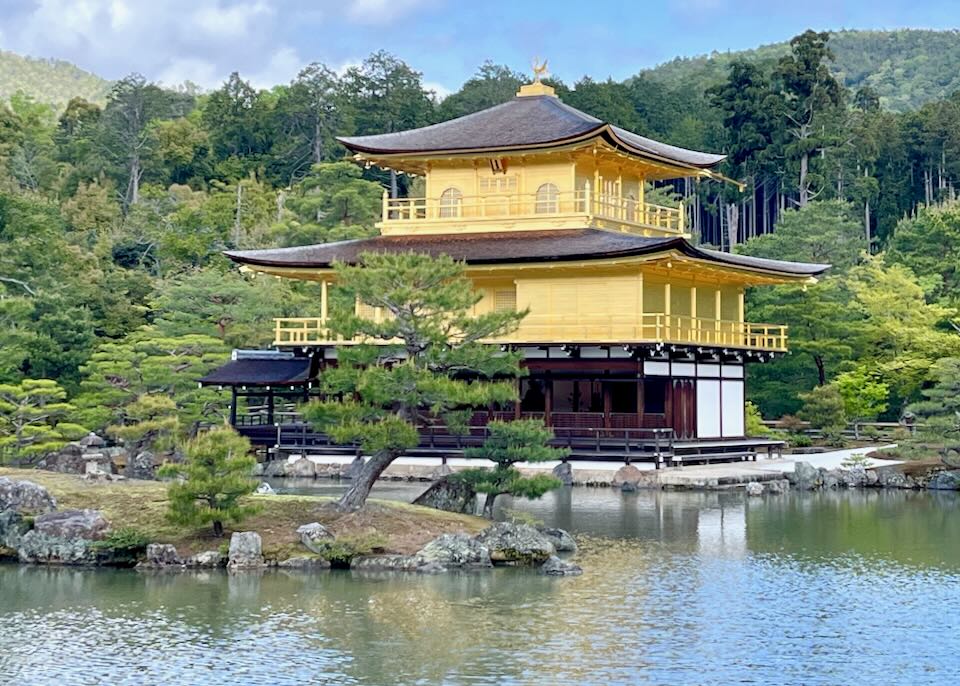
Kinkaku-ji Temple (officially Rokuon-ji), aka the Golden Pavilion, in Kita-Ku, Kyoto.
The Best Areas to Stay in Kyoto
As Japan’s original capital and home to the emperors for over 1,000 years, Kyoto is now the country’s premier tourist destination. Little has changed in parts of the city since those glory years, with narrow lanes of traditional Japanese houses. There are gorgeous, gilded temples and pagodas seemingly on every corner. It’s also known for its arts and craft shops and distinctive cuisine, including kaiseki (high-end multi-course menus). In recent years, it’s also become a hub for all sorts of cultural activities, from dressing up as a geisha to participating in tea ceremonies and learning to play traditional instruments like the shamisen.
Unsurprisingly, Kyoto is often incredibly busy, especially during national holidays, though there are as many foreign tourists as Japanese these days. You’ll need to book activities and accommodation well in advance. The good news is that Kyoto offers a vast range of hotels in every price bracket – the best are listed below.
Kyoto became Japan’s imperial capital under Emperor Kanmu in 794 AD, only relinquishing the title to Tokyo in 1868. The main reason many of its ancient monuments survive is that, like Nara (but unlike Osaka and Tokyo), Kyoto was one of the few cities in Japan not to be flattened in World War II (it was famously kept off the atomic bomb list by Henry Stimson, US Secretary of War).
Kyoto Neighborhoods
The Katsura River at Arashiyama.
Kyoto lies in a wide valley surrounded by hills on three sides, the Katsura River to the west and the Kamo River to the east. Stretching north of Kyoto Station, modern Shimogyō-ku lacks historic character but is the most convenient neighborhood for reaching Kyoto’s many sights. Kyoto Tower – the tallest structure in the city – and lesser visited temples such as Higashi-Honganji, Nishi Hongan-ji, and Tō-ji are here, in addition to the Kyoto Aquarium and Kyoto Railway Museum.
Teramachi-dōri covered shopping street.
To the north, Central Kyoto (made up of Nakagyō-ku and Kamigyō-ku) is the city’s primary commercial center and Downtown. There’s a huge range of hotels and shopping districts around Kyoto Railway Museum, Shijō-dōri, and north along Teramachi-dōri, Kyoto’s main covered shopping street. The Nishiki Food Market (another covered food stall street) is one of the city’s biggest attractions. The Museum of Kyoto, Kyoto International Manga Museum, and Nijō Castle are also here. The northern end of Central Kyoto is dominated by the Imperial Palace and Nishijin District – Kyoto’s traditional weaving neighborhood.
Sannen-zaka in Higashiyama.
Shijō-dōri leads east over the Kamo into Gion, the city’s central entertainment district, and to Higashiyama district in the lower eastern hills, which shelters many of Kyoto’s most famous temples. This is a more atmospheric, historic area, with pedestrianized lanes lined with souvenir shops, gardens, teahouses, and restaurants. Highlights include the 1001 Buddhist statues at Sanjūsangen-dō, the Kyoto National Museum art collections, the stunning pagoda and views at Kiyomizu-dera, and the giant statue at Ryōzen Kannon. Narrow lanes like Sannen-zaka and Ninen-zaka, lined with traditional Japanese houses, provide much of the allure.
Northern Higashiyama is part of sprawling Sakyō-ku, another historic neighborhood of famous temples and museums. The area includes Nanzen-ji temple and graceful Ginkaku-ji (The Silver Pavilion), linked by the enchanting Philosopher’s Path along a cherry tree-lined canal. The neighborhood also has Kyoto’s museum district around Okazaki Park, with a cluster of excellent attractions perfect for a rainy day: Kyoto City KYOCERA Museum of Art, the National Museum of Modern Art, Kyoto, Kyoto Museum of Crafts and Design, the Hosomi Museum and the monumental Heian Shrine.
Kita-Ku (North Kyoto) is more spread out and a little inconvenient to stay, though some of the city’s top attractions are here. The sensational Kinkaku-ji, aka the Golden Pavilion, and Ryōan-ji, a Zen Buddhist temple celebrated for its “dry” rock garden, are in the area.
Northwestern Kyoto includes similarly sprawling Ukyō-ku and the more concentrated historic enclave of Arashiyama. Most visitors day trip here to enjoy its rustic attractions like the bamboo groves, moss-covered temples, famous wooden bridge, and old streets. But some charming hotels here offer a more tranquil experience than staying in the city center. Other highlights include the Toei Kyoto Studio Park, a working film studio and theme park, and the Katsura Imperial Villa, featuring traditional architecture and gardens.
Byōdō-in Temple.
The Gekkeikan Okura Sake Museum, 4 miles (6.5km) south of Kyoto Station (20min by train), is one of the country’s best introductions to sake. Uji (30min by train from Kyoto Station) is home to the magnificent Byōdō-in, one of Japan’s most famous Buddhist temples (it’s on the ¥10 coin). The former villa was converted into a temple in the 11th century. Part of the temple is the beautiful Phoenix Hall, which is over 1,000 years old. Inside is a giant Amitābha Buddha statue created by legendary sculptor Jōchō. Entrance to Phoenix Hall is restricted to 50 visitors at a time on a guided tour conducted in Japanese but with an English handout. If the wait is too long (up to two hours in peak season), you can visit the Treasure Museum, which does an excellent job portraying Phoenix Hall’s interior with virtual-reality exhibitions, computer graphics, and murals.
Some 15 miles (25km) northeast of Kyoto Station is sacred Mount Hiei, a tranquil reserve sprinkled with ancient temples and forests of old cedar. You can reach the summit via the Eizan Cable Car and Ropeway (and make a loop by descending the other side on foot or via the Hieizan Sakamoto Cable Car). The most venerable temple up here is the 8th-century Enryaku-ji, the headquarters of the Tendai sect of Buddhism. The Shūgaku-in Rikyū (Shugakuin Imperial Villa) is best known for its traditional gardens in the western foothills. Further north, Mount Kurama sees far fewer tourists. This mountain is best known for being the birthplace of Reiki, the alternative healing practice. Founder Mikao Usui meditated here in 1922 for 21 days before “receiving” Reiki healing energy – a small shrine marks the spot.
Getting Around Kyoto
Walking is the best way to explore Kyoto’s neighborhoods. Most of the city is laid out on a grid pattern, with many signs in English. To get across the city, it’s fastest to use Kyoto’s two subway lines (Karasuma Line and Tōzai Line), but you’ll need to take buses to reach hotspots like the Golden and Silver pavilions. Buses are relatively easy to use, with signage and announcements in English, but they can become very crowded at peak times. Within the city, it costs a flat fare of ¥230 (paid when leaving the bus). A one-day pass that covers the subway and buses is ¥1,100.
Don’t rent a car. Parking is expensive, roads can get congested, and driving here can be confusing. Kyoto has excellent public transportation, and buses and/or the subway will take you within walking distance of almost every attraction.Exploring Kyoto by bike is popular. The central part of the city is mostly flat, and the outer areas (where the best temples are) become progressively more hilly (e-bikes are available).
Note that strict rules exist about where a bike can be left in the city center. Generally, you have to park it in a designated bike parking lot. If you leave it on the street, even for a few minutes, it’s liable to be removed by zealous parking attendants – fines start at a hefty ¥3,500. Reliable private rental companies include Kyoto Eco Trip and Fuune.
The Best Places to Stay in Kyoto
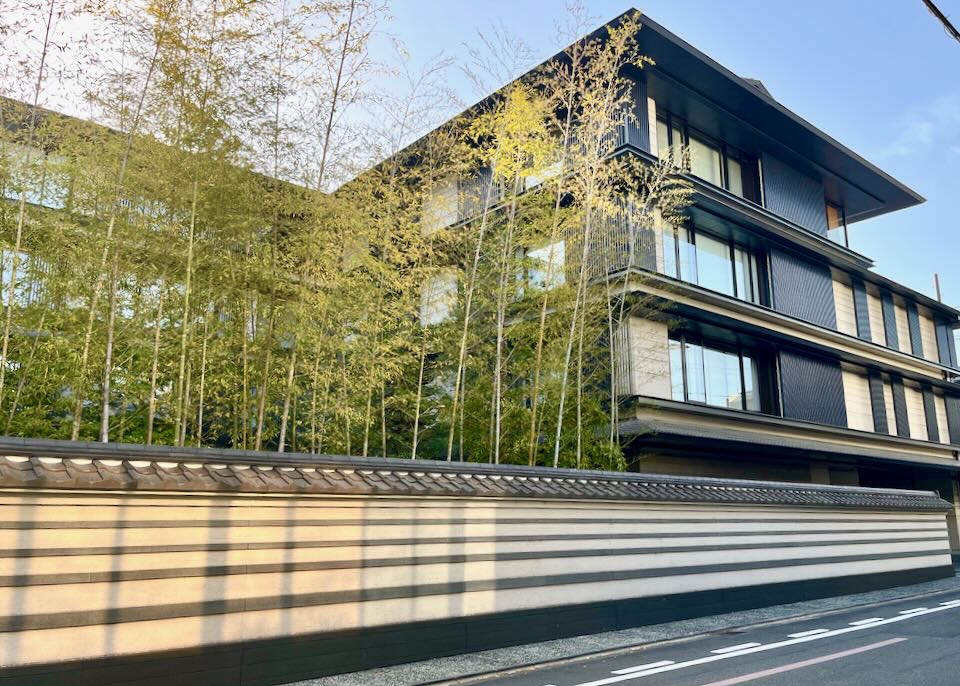
The Mitsui hotel and spa.
- Best Luxury Hotels in Kyoto
The Mitsui • Sowaka • Roku • Garrya Nijo Castle • The Ritz-Carlton • Four Seasons- Best Boutique Hotels in Kyoto
Muso • My K House • Ace • BnA Alter Museum • Nagi Arashiyama- Best Ryokans in Kyoto
Tori • Gallery Nozawa Inn • Luck You • Ishibekoji Muan • Gion Sano- Best Cheap Hotels in Kyoto
Kyo-Anthu Inn • Guesthouse Bon • Hachi Inn • Suzuki Guesthouse • GOCO • Number 6 Nijo • Sakura Komachi- Best Hostels in Kyoto
Tsukimi • Mulan • Ryokan Hostel Gion • Guesthouse WIND VILLA • NiniroomBest Places in Kyoto for…
- Best Neighborhood in Kyoto to Stay for Sightseeing: Shimogyō-ku (Around Kyoto Station)
Kyoto Tower near Kyoto Station.
Shimogyo-ku is convenient for sightseeing even though there’s only a handful of attractions in the neighborhood – Kyoto Tower, Higashi-Honganji, Nishi Hongan-ji and Tō-ji temples, and Kyoto Station itself, with its department store, restaurants, and public spaces that include a rooftop park. But what makes this area great for sightseeing is that buses outside the station’s Central North exit depart for just about anywhere you’d like to go, while the Karasuma subway line connects to Central Kyoto and the Imperial Palace. Departing from Kyoto Station are trains to Arashiyama, Byōdō-in, Fushimi-Inari Taisha, Mount Hiei, Osaka, and Nara. There are many hotels surrounding the station, most of them modestly priced.
- Best Neighborhood in Kyoto for Walkers: Higashiyama (Eastern Kyoto)
Kyoto is a great city for exploring on foot, especially the eastern ward of Higashiyama-ku. (Sakyo-ku to the north has a similar atmosphere). Some streets and sights are accessible only by foot or private taxi due to pedestrian lanes and hills that make travel by bus impossible. Furthermore, one of Kyoto’s most delightful hikes is from Kiyomizu-dera to Ginkaku-ji (The Silver Pavilion), passing many temples, shrines, parks, teahouses, and the famous Philosopher’s Pathway. Staying in Higashiyama allows visitors to explore at leisure. The Higashiyama sub-district of Gion is a major area for eating, drinking, and nightlife.- Best Neighborhood in Kyoto for Families: Ukyō-ku (Northwestern Kyoto)
Northwestern Kyoto is mainly residential but includes the pretty district of Arashiyama, with bamboo forests and a monkey park. However, the appeal for most kids is Toei Kyoto Studio Park with its Edo-era film studios. The resort-like Utano Youth Hostel is a unique, reasonably-priced standout offering many activities. Other popular attractions throughout the city include the Kyoto Railway Museum (near the station), Kyoto Zoo, Kyoto Botanical Gardens, and Kiyomizu-dera Temple. Stay closer to Kyoto Station (in Shimogyō-ku) to maximize sightseeing (see above).- Best Neighborhood in Kyoto for a Local Vibe: Central Kyoto (Nakagyō-ku)
Home to Nijō Castle, Kyoto International Manga Museum, covered shopping arcades (including the famous Nishiki Food Market), and department stores. It’s the city’s greatest concentration of shops, restaurants, hotels, and ryokan (Japanese inns). Central Kyoto is both dynamic and surprisingly livable. Its many residential neighborhoods seem like small villages, some lined with machiya townhomes. Whether this is your first time in Kyoto or your tenth, Nakagyo-ku is an excellent choice for experiencing the essence of Kyoto.- Most Romantic Neighborhood in Kyoto: Arashiyama
Serving as a playground for the aristocracy and the imperial court during the Heian Period (794–1192), Arashiyama is an ancient tourist town still beloved for its spring cherry blossoms, wooden bridge, fall maple leaves, famous bamboo grove and many temples, including World Heritage site Tenryu-ji. Fun activities include taking the “Sagano Romantic Train” (25 minutes to Kameoka), with the return journey via a 2-hour “Hozugawa River Boat Ride.” Stay in MUNI Kyoto, close to the river, for the ultimate romantic splurge.- Best Neighborhoods in Kyoto for Nightlife: Pontochō/Kiyamachi (Central Kyoto) and Gion (Higashiyama)
Kyoto’s most picturesque nightlife is in Pontochō, the former geisha enclave, a narrow pedestrian alley with bars and restaurants. Those on the east side erect platforms in summer extending over the Kamo River, making for romantic outdoor dining. Hello Dolly offers live jazz, Bar Alchemist knocks out creative but pricey cocktails, and Bar Cask is a friendly, multinational hangout.Bars and eateries on the Takase River Canal in Kiyamachi-dōri.
Just west of Pontochō is Kiyamachi-dōri (alongside the Takase River Canal), a street of bars, cheap eateries, and live music venues popular among Kyoto’s many university students. Craft Beer Bar Canvas and nearby Master’s Dream House Kyoto are an excellent introduction to Kyoto’s burgeoning craft beer scene. Rum And Whisky is another fun pick with knowledgeable staff. On the other side of the Kamo River is Gion: bars and restaurants to the north of Shijō-dōri (particularly along the Shirakawa Canal in a district known as Shinbashi) include Jam Hostel Sake Bar, excellent whiskey specialist Bar Prost, and intimate Rock Bar Crunch. Geisha houses tend to lie to the south of Shijō-dōri, especially on Hanamikōji-dōri, where you might see a geisha on her way to an evening appointment. We love the cocktails at Finlandia, which usually has English-speaking staff. Le Club Jazz, featuring high-quality Japanese and international jazz artists, stands a short walk from the northern end of Pontochō Alley. Several local companies offer “Gion Night Tours.” WaRaiDo Guide Networks is an excellent place to start if you’d like to get your bearings before heading out alone.
- Best Areas in Kyoto for Food and Restaurants: Central Kyoto and Higashiyama/Gion
Kyoto has a dynamic culinary scene, with excellent restaurants scattered throughout the city. However, you’ll find the greatest choice in Central Kyoto and some of the best high-end restaurants in Higashiyama, especially in Gion. Kyoto is best known for its kaiseki (or kyō-ryōri) restaurants, where guests are served high-end, set menus that change seasonally. The top restaurants are US$200 per person and up and require reservations weeks in advance. Kyoto is also known for its (cheaper) teahouses, wagashi (Japanese sweets), tofu, ramen, and shōjin ryōri — Vegetarian cuisine often served at Buddhist temple restaurants.Nishiki Food Market.
Start at Nishiki Food Market in Central Kyoto, a covered shopping arcade with over 100 shops and food stalls serving snacks and dishes. It’s best known for fresh seafood, Japanese sweets, and traditional pickles/preserves.
Scallops at Nishiki Food Market.
For coffee, we suggest Drip & Drop Coffee Supply and Weekenders Coffee Tominokoji, Honke Owariya for soba noodles, Ippudo Ramen for ramen noodles, Kane-yo for unagi (eel), Kikkoya for Kyoto-style food, Nishiki Warai for okonomiyaki, Tousuiro Kiyamachi Main Shop for tofu, and Yoshikawa for tempura. There are plenty of posh restaurants for a splurge. Isshisoden Nakamura, Kiyama, Tominokoji Yamagishi and Yusokuryori Mankamerou are the best places to sample kaiseki in Central Kyoto. Over in Gion, there are numerous high-end restaurants: the “charcoal-fired cuisine” of chef Norio Yamamoto’s Sumibi Kappo Ifuki, Mizai, where meals by chef Hitoshi Ishihara are served at single sittings with matcha made with “holy water” from Yasaka Shrine, exquisite fusion cuisine at Kikunoi Honten, Maeda, where chef Yujiro Maeda chooses the menu for each diner individually and the elaborate menus at Gion Sasaki from chef Hiroshi Sasaki, among many others. There are plenty of more affordable places to eat here. Kagizen Yoshifusa (Shijō Main Branch) is one of our favorite places to enjoy traditional Japanese sweets and matcha tea.
- Best Area for Shopping: Central Kyoto (Nakagyō-ku)
In Central Kyoto, all the shopping is within walking distance. Shijō-dōri runs east to west through the southern half of downtown, forming the backbone of Kyoto’s prime shopping district – the stretch between the Kamo River and Karasuma Street is bustling (Daimaru has the best basement food hall, and Fukujuen is a famous tea store).A sushi stall in Daimaru Food Hall on Shijō-dōri.
Mon Loire chocolate counter in Daimaru Food Hall on Shijō-dōri.
At Shijō-Kawaramachi, there’s the Kawaramachi OPA mall, Takashimaya, and the Kyoto Kawaramachi Garden mall (with another big food hall). Teramachi-dōri, Kyoto’s main covered shopping street (or “shōtengai”), runs north from Shijō-dōri lined with stores and restaurants.
Nearby, Teramachi intersects with similarly covered Nishikikōji-dōri, home to the Nishiki Food Market. Nicknamed “Kyoto’s Kitchen,” it’s been selling seafood, local produce, pickled vegetables, and yuba (tofu skin) for over 400 years.
Guranpie Chōjiya home goods store.
Further north, the open, tree-lined section of Teramachi between Marutamachi and Nijō streets is known as “Teramachikai.” It’s home to antique stores, art galleries, traditional shops like Ippodo (selling fine Japanese teas), Zohiko Lacquer Shop, and the Geirinsō used bookstore. Shinkyōgoku Shopping Street runs parallel to Teramachi north of Shijō-dōri. There’s another hip area of boutiques and indie stores around the junction of Sanjō and Tominokoji streets. There, the SACRA mall occupies the old Fudo Savings Bank, built in 1916, while fashion store MARcourt operates out of the 1890 Yabetoku-Tokeiten building nearby. Other stores include Aritsugu (the traditional cutlery store in Nishiki Market) and Miyawaki Baisen-an (for handmade Japanese fans).
- Safety in Kyoto
Anywhere in Kyoto tends to be very safe, and the city, in general, is uncommonly safe, especially if you take the standard precautions at night.
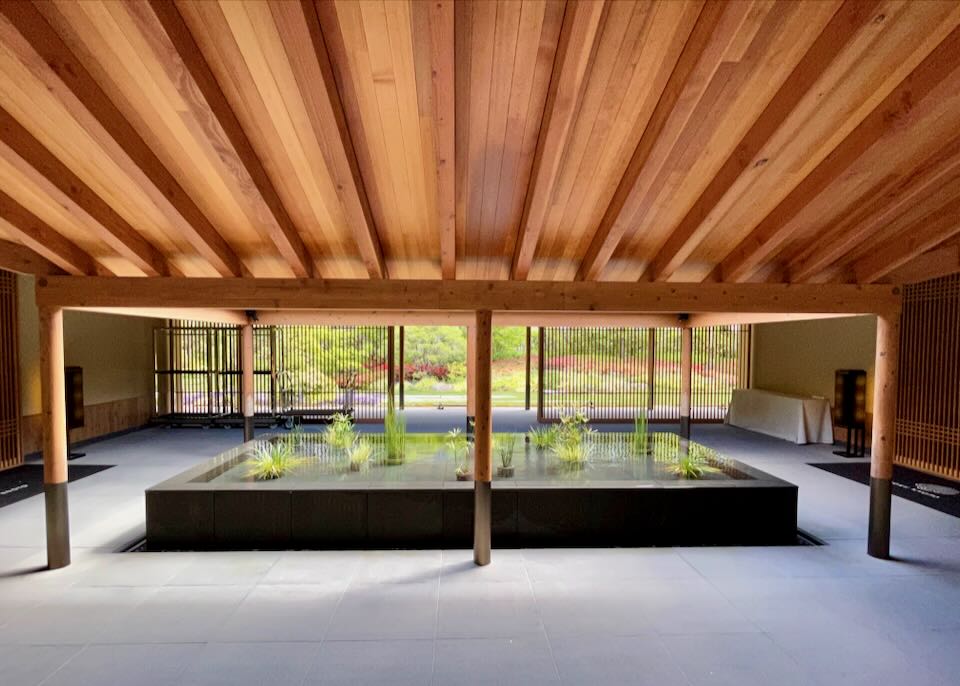
The open lobby at Roku and the relaxing garden on the other side.
The 6 Best Neighborhoods in Kyoto for Tourists
1. Shimogyō-ku (Around Kyoto Station)
Tō-ji Temple is Japan’s tallest pagoda.
North of Kyoto Station, Shimogyō-ku is the most convenient area for reaching Kyoto’s many sights, as buses, the subway, and trains run from Kyoto Station to other parts of the city and beyond. Kyoto Station is also the bullet train/Shinkansen hub. But few attractions are within walking distance, and Kyoto’s biggest sights are elsewhere.
This is the modern part of the city. Kyoto Station is a destination in itself—a huge and initially confusing complex crammed with shopping malls, food courts, and restaurants. Nearby, the 1960s Kyoto Tower is the tallest structure in the city, with a hotel and an observation deck at 328ft (100m).
Nishi Hongan-ji Temple in the Shimogyō ward.
It’s worth visiting the two massive temples just north of the station. They tend to have far fewer tourists than the more famous shrines. Nishi Hongan-ji Temple is the headquarters of the Jōdo Shinshū sect of Buddhism and contains an incredibly ornate 16th-century Karamon (gate).
Higashi-Honganji Temple.
The monumental Higashi-Honganji Temple contains the Goeidō (Founder’s Hall), Kyoto’s largest wooden structure, and the mausoleum of Shin Buddhism founder Shinran (1173–1263).
A 15-minute walk west of the station is Umekoji Park. Home to Kyoto Aquarium (with marine life from the Kyoto area and beyond) and the underrated Kyoto Railway Museum, a must for train buffs. In addition to a switch yard, a 10-minute steam locomotive ride, and simulators for training conductors, there are 53 historic train cars (including Shinkansen bullet trains and a 1959 Pullman used by the Imperial family), plus a children’s play area. But the highlight is the huge railway diorama, which runs five times daily.
Around a 15-minute walk southwest of Kyoto Station, Tō-ji Temple boasts Japan’s tallest pagoda (at 180ft) and a monthly flea market that’s the largest and oldest in Japan (held on the 21st of every month). Tō-ji Temple was founded in 796 AD. It achieved notoriety in 823 when Emperor Saga presented it to the famous monk Kūkai (posthumously known as Kōbō Daishi), who made it the headquarters of the Shingon sect of Buddhism. The Takase River, a tree-lined canal that runs north a few blocks east of the station, is the most pleasant spot to hang out in this area.
Murmur coffee on the Takase River in Shimogyō-ku.
It has hip cafés like Murmur Coffee, craft beers at Kyoto Beer Lab, Lebanese food at [ki:], and the boutique hotel Takasegawa Bettei.
There’s lots of modern accommodations here, especially in the mid- and budget ranges.
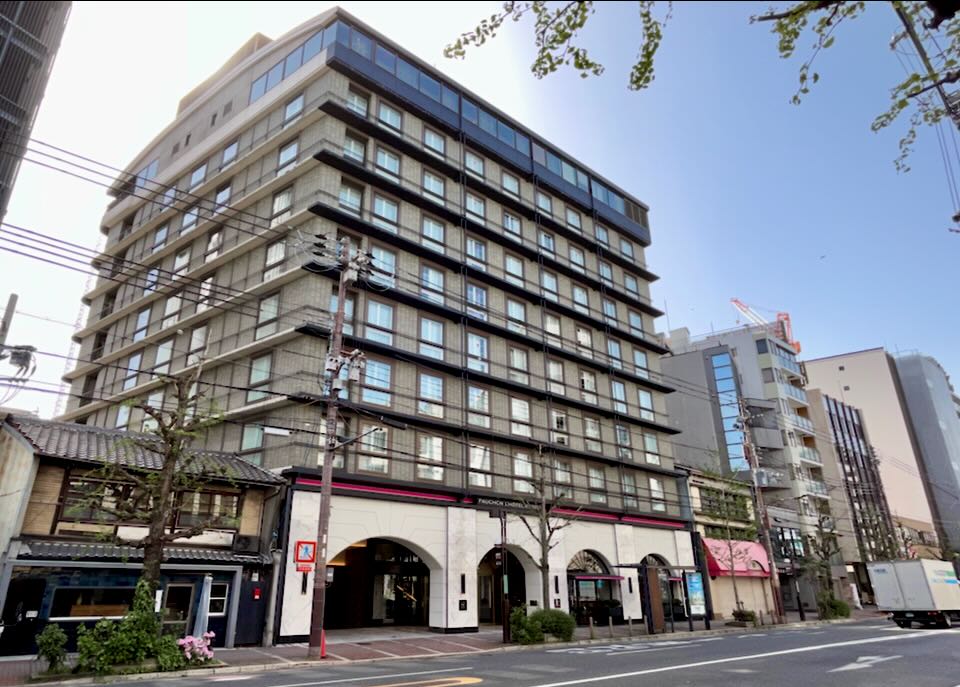
One of the best Hotels in Shimogyō-ku is Fauchon.
- The Best Hotels in Shimogyō-ku (Around Kyoto Station):
Muso • Hotel phone: +81 75 354 0250
Fauchon • Hotel phone: +81 75 751 7711
The Thousand • Hotel phone: +81 75 354 1000
Onyado Nono Kyoto Shichijo Natural Hot Spring • Hotel phone: +81 75 365 5489- Best Boutique Hotels:
My K House • Hotel phone: +81 75 343 8333
BnA Alter Museum • Hotel phone: +81 75 748 1278- Best Ryokans:
Luck You • Hotel phone: +81 75 366 3211
Gallery Nozawa Inn • Hotel phone: +81 75 353 7990
Takasegawa Bettei • Hotel phone: +81 75 365 5060
Fujiya • Hotel phone: +81 75 351 3894
Matsubaya • Hotel phone: +81 75 351 3727- Best Cheap/Mid-Range Hotels:
Hachi Inn • Hotel phone: +81 75 585 5267
Ayame • Hotel phone: +81 75 203 8339
Hibari • Hotel phone: +81 75 874 6727
Fujitaya B&B • Hotel phone: +81 75 925 9217
M’s Est Nanajo • Hotel phone: +81 75 330 9330- Best Hostels:
K’s House • Hotel phone: +81 75 342 2444
Hana • Hotel phone: +81 75 371 3577
R Star • Hotel phone: +81 75 585 50072. Central Kyoto: Nakagyō-ku & Kamigyō-ku
The covered Teramachi-dōri Shopping Street.
Kyoto’s central downtown wards are home to the city’s greatest concentration of hotels, ryokan (Japanese inns), restaurants, specialty shops, covered shopping arcades, and department stores. It also contains residential neighborhoods, some lined with machiya (traditional wooden townhomes), and some of Kyoto’s most important sights.
Teramachi-dōri, Kyoto’s main covered shopping street, runs north from busy Shijō-dōri and is home to the famous “Kyoto Samurai and Ninja Experience” with all sorts of weapons and armor on display. Nearby, Teramachi intersects with similarly covered Nishikikōji-dōri, home to the photogenic Nishiki Food Market.
A bit further north is the Museum of Kyoto, with a relatively small exhibit on city history. It’s easily skipped, but history buffs should check it out. Not much is labeled in English, though English audio guides are available. The handsome old part of the museum was once the local branch of the Bank of Japan and is usually free to look around.
Two blocks north of the museum is Oike-dōri, another major east-west avenue with businesses and government offices. Kyoto City Hall is here, and just north on Karusuma is the wildly popular Kyoto International Manga Museum.
Occupying an old elementary school, the museum features a small but excellent shop (you can visit for free) and a gallery dedicated to the history of Japanese manga (comics) and historic cartoons from the late Edo Period. But it’s best known for its massive collection of 50,000 comics and graphic novels (primarily in Japanese).
The “Wall of Manga” at Kyoto International Manga Museum
Also known as the “Wall of Manga,” spanning 50 years or so, eager fans can read in chairs and sofas conveniently laid out around the museum. Kids and manga fans will love it. On the weekends, professional manga artists work here, and there are a couple of daily traditional “kamishibai” Japanese storytelling shows, but there’s not much else to see.
Nijō Castle.
Keep heading west along Oike-dōri, and you’ll come to Nijō Castle, one of Kyoto’s top attractions. The Imperial Palace was the emperor’s home, but this was the base of the shogunate in the city, where real power was held. Built by Shogun Tokugawa Ieyasu in 1603, its grounds contain the 33-room Ninomaru Palace (the Shogun’s Kyoto residence) with a garden designed by famed gardener Kobori Enshu, and the Honmaru Palace (the emperor’s quarters). The palaces are being renovated. Check the website for updates. It’s worth paying extra to visit either palace’s interior since there’s nothing like it anywhere else in Kyoto. Otherwise, you can walk around the gardens and see the exterior.
Just south of the castle, history fans can arrange a tour of the Nijō-Jinya, a beautiful old inn that once housed feudal lords. Tours are only given in Japanese, so unless you speak well, you’ll need to arrange an interpreter in advance.
The Imperial Palace Park.
The northern end of Central Kyoto is dominated by the Imperial Palace and the vast, park-like grounds of the Kyoto Gyoen National Garden. Long featureless walls protect the area, and you’ll have to go inside to see anything. The entrance is through the palace’s west Seishomon Gate. It’s free, and a route takes you around the main buildings but not inside any of them. This was the home of Japanese emperors for centuries until they relocated to Tokyo in 1868, but most buildings were rebuilt in the 1850s or subsequently.
A loop at the Nishijin Textile Center.
There’s little to see north of the palace. Fans of local “Nishijin-ori” (woven silk textiles) and kimonos should visit the free Nishijin Textile Center – the shop here offers good quality items, and there’s a small but informative museum about the craft, traditional looms in action, and (daily, check the website) kimono fashion shows. The center lies in the Nishijin District, Kyoto’s traditional weaving neighborhood.
To end the day, consider visiting the Funaoka Onsen, the best “sentō” (public bath) in Kyoto. There’s an especially attractive outdoor pool here and beautifully tiled changing rooms.
On the eastern side of Nakagyō-ku (opposite Gion), two parallel lanes between the Kamo River and Takase River Canal form an atmospheric nightlife zone: narrow Pontochō Alley and Kiyamachi-dōri along the canal.
Pontocho Alley.
Like Shimogyō-ku, there are many accommodations throughout Central Kyoto, and the quality is usually better. There are also good boutique hotels.
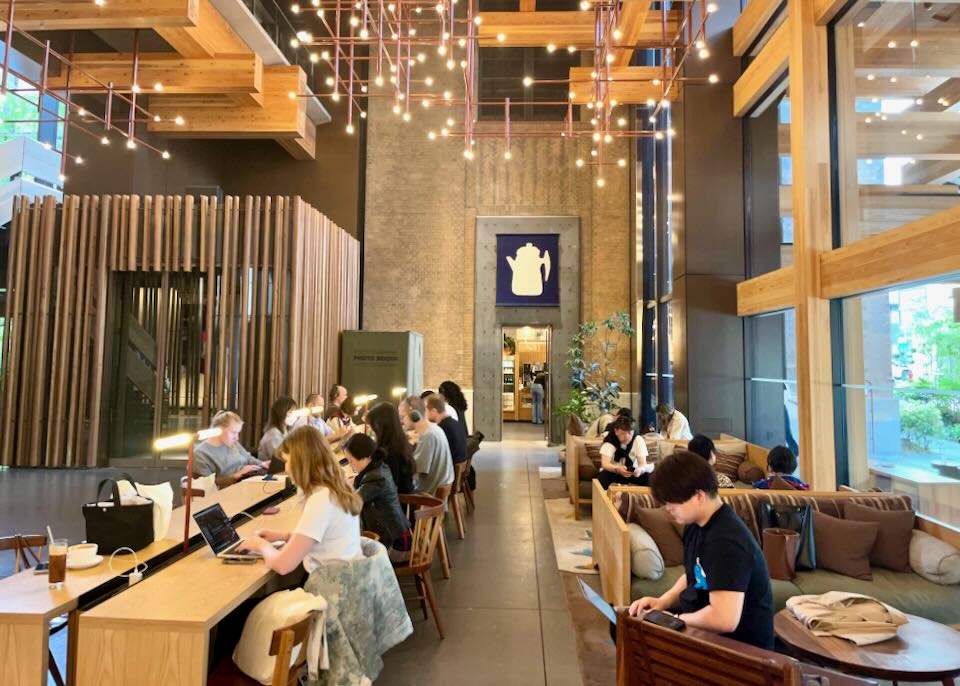
The Ace hotel lobby has a great remote working area.
- The Best Hotels in Central Kyoto:
The Mitsui • Hotel phone: +81 75 468 3100
Garrya Nijo Castle • Hotel phone: +81 75 366 5806
MIMARU Kyoto Shinmachi Sanjo • Hotel phone: +81 75 606 5013
The Ritz-Carlton • Hotel phone: +81 75 746 5555- Best Boutique Hotel:
Ace • Hotel phone: +81 75 229 9000- Best Ryokans:
Tori • Hotel phone: +81 75 205 3492
Tawaraya • Hotel phone: +81 75 211 5566
Hiiragiya • Hotel phone: +81 75 221 1136
Sumiya • Hotel phone: +81 75-221-2188- Best Cheap/Mid-Range:
Suzuki Guesthouse • Hotel phone: +81 75 802 1267
GOCO • Hotel phone: +81 75 744 1221
Number 6 Nijo • Hotel phone: +81 75 354 5159
Koiya Guesthouse • Hotel phone: +81 75 366 8940
Piece Hostel Sanjo • Hotel phone: +81 75 746 3688
Ben’s Guesthouse • Hotel phone: +81 75 468 1000
OneFive Kyoto Shijō • Hotel phone: +81 57 066 6815
Carta Hotel Kyoto Bette • Hotel phone: +81 75 205 54683. Higashiyama & Gion (Eastern Kyoto)
The entrance to the famous Kiyomizu-dera temple. In the foreground is Nio-mon, the main entrance, and in the background is Sai-mon the west gate.
Crammed with ancient temples and pretty side streets of old Japanese houses on the foothills east of the Kamo River, Higashiyama is the most enchanting part of the city. Shops, parks, teahouses, and restaurants line the pedestrianized lanes. It can get busy during the day, but things quiet down outside the Gion entertainment district at night.
You could spend weeks exploring the historic sights here. Sanjūsangen-dō tends to be slightly less busy than Kyoto’s other major Buddhist temples but is a must-see. The main draw is its roughly 400-foot long, 13th-century hondō (main hall) crammed with 1001 statues of the bodhisattva Kannon (the Buddhist Goddess of Mercy, not actually “Buddha” as labels suggest) carved from Japanese cypress clad in gold leaf. In the center is a giant multi-armed statue of Kannon carved in 1254. No photos are allowed in the hall, and you must remove your shoes to go inside.
The Kyoto National Museum.
Nearby, the Kyoto National Museum is home to paintings, religious statues, ceramics, textiles, lacquerware, and swords created by artisans over 1,200-plus years (there’s also a pleasant café at the entrance). Japanese folk art fans might want to check out Kawai Kanjirō’s House nearby, the beautifully preserved traditional home and studio of famed potter Kawai Kanjirō (1890–1966). Kawai co-founded the Japanese folk art movement, designed the house himself, and handcrafted much of its furniture.
From here, you can stroll up Chawan-zaka (known for local pottery stores) or busy, souvenir-stall lined Matsubara-dōri (aka “Kiyomizu-zaka”) to Kiyomizu-dera, Kyoto’s most famous temple thanks to its luminous orange pagoda that dominates the hillside. It dates to the 8th century, though most of what you see today was constructed in the 1600s. The temple’s main hall is built over a cliff, supported by 18 gigantic pillars up to 6 feet in circumference and 39 feet high – the views of the city below are spectacular. You’ll have to line up to sample the pure spring water of Otowanotaki (a tiny cascade with three streams) behind the pagoda, which is said to bring good health and grant wishes.
The charming stone-paved lane of Sannen-zaka (which drops down steeply to the north off Matsubara-dōri) and Ninen-zaka connect Kiyomizu-dera with Ryōzen Kannon. A modern temple dedicated to Japanese soldiers killed in World War II, with a giant statue of bodhisattva Kannon.
Next door is Kōdai-ji, another beautiful Buddhist temple, principally dedicated to warlord Toyotomi Hideyoshi and his wife, Kita-no-Mandokoro, with an enigmatic “dry” Zen garden. On Ninen-zaka, look for one of the most attractive Starbucks anywhere, set in a two-story, century-old Japanese townhouse with tatami seating.
The Starbucks on Ninen-zaka.
Cherry-blossom-strewn Maruyama Park lies at the northern end of Higashiyama. If you’re with kids, it’s a convenient place to unwind, get some ice cream from one of the park’s kiosks, and watch the fish and birds along the shores of the central pond. On its northern edge is Chion-in Temple with its remarkable Samnon gate (one of Japan’s largest). Founded by the priest Hōnen in 1175, the temple is the headquarters of Buddhism’s Jōdo Shu (Pure Land) sect. On the other side of the park lies the 7th-century Yasaka-jinja Shrine, famous for its Gion Matsuri festival every July.
Gion
Minami-za Theater in Gion, for kabuki performances.
Gion is the most famous of Kyoto’s five traditional geisha districts, though it’s also a major entertainment district with modern restaurants and bars today. While geiko (as geisha are called in Kyoto) used to number in the hundreds, today, only about 250 remain, with fewer than 70 in Gion. One of the most popular things to do in Kyoto is to gather around Gion’s main street, Hanamikōji-dōri, at dusk – hoping to see a geiko or maiko (geisha apprentice) on her way to work. Though signs now proclaim this a “private” street and to stop photo taking.
Also here is Gion Corner, a theater complex introducing Japan’s ancient cultural arts with performances of flower arranging, the tea ceremony, music, dance, and bunraku (Japanese puppetry). Shijō-dōri runs west from Yasaka-jinja and forms the main drag of Gion, eventually crossing the Kamo River and cutting into Central Kyoto (see above). The Gion section is lined with stores, famous snack and cake shops, and the grand Minami-za Theater for kabuki performances.
Twin dragons painted on the ceiling of Kennin-ji Temple by Koizumi Junsaku.
Kennin-ji is an excellent temple to visit to avoid the inevitable crowds at Kiyomizu-dera. Founded in 1202 by the priest Yōsai, it claims to be the oldest Zen Buddhist temple in the city. Once you’ve taken your shoes off, you can check out a rare fold-screen painting of the wind and thunder gods, view its three Zen gardens and the teahouse, then walk over to the Dharma Hall where Koizumi Junsaku’s spectacular ceiling mural “Twin Dragons” was installed in 2002.
Getting made up as a maiko or geisha is very popular. Most opt to wear the traditional kimono and wander around taking pics for an hour. Some experiences involve a full makeover with white make-up, wigs, etc., costing anything from US$80 to US$350 and up. Popular choices include Gion Aya studio and Maiko-Henshin Studio Shiki. For simple kimono rentals, try Kyoto Kimono Rental SAKURA.
Higashiyama and Gion are known for their luxury 5-star hotels and posh villa rentals (many of them renovated “machiya,” traditional wooden houses). It’s an atmospheric place to stay, but exploring the rest of the city from here is more time-consuming.
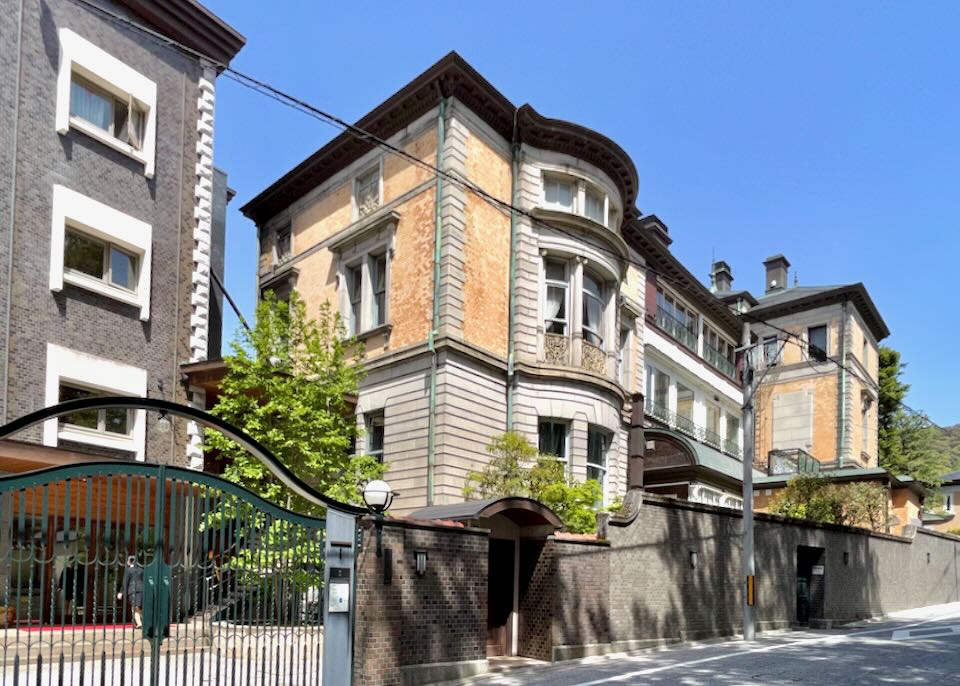
The Chourakukan was Murai Kichibeia’s guest house (the “Tobacco King”) in 1909, and now it’s a historic hotel.
- The Best Hotels in Higashiyama & Gion:
Sowaka • Hotel phone: +81 75 541 5323
Chourakukan • Hotel phone: +81 75 561 0001
Park Hyatt • Hotel phone: +81 75 531 1234
Four Seasons • Hotel phone: +81 75 541 8288
Westin Miyako • Hotel phone: +81 75 771 7111
Junei • Hotel phone: +81 75 525 0050- Best Ryokans:
Gion Sano • Hotel phone: +81 75 561 0206
Ishibekoji Muan • Hotel phone: +81 75 741 8815
Seikoro • Hotel phone: +81 75 561 0771
Kamoya • Hotel phone: +81 75 748 1589- Best Cheap/Mid-Range Hotels:
Kyo-Anthu Inn • Hotel phone: +81 75 746 5277
Ga-Jyun • Hotel phone: +81 75 708 8573
Misen • Hotel phone: +81 75 525 7035
M’s Inn • Hotel phone: +81 75 320 4126- Best Hostels:
Tsukimi • Hotel phone: +81 75 532 2660
Ryokan Hostel Gion • Hotel phone: +81 75 754 8511
WIND VILLA • Hotel phone: +81 75 285 4257
4. Sakyō-ku (the “Ward on the Emperor’s left”) – Northeast Kyoto
The Philosopher’s Path runs next to a canal lined by hundreds of cherry trees.
Northern Higashiyama is part of sprawling Sakyō-ku, another historic neighborhood of famous temples and museums, including the prestigious Kyoto University. There are two principal areas of interest for visitors: central Okazaki Park, the city’s museum district (a prime rainy-day option), and the strip of temples that lines the foothills to the east.
Just south of the park lies the Kyoto City KYOCERA Museum of Art (post-1868 Japanese and foreign art) and the adjacent Higashiyama Cube for contemporary art, the National Museum of Modern Art, Kyoto (20th-century modern art) next to a giant red torii gate, and the excellent Kyoto Museum of Crafts and Design, with more than 70 types of local crafts on display.
Nearby Kyoto Zoo is small but fun for younger kids, and the Murin-an is just across the Biwa Canal. The elegant 19th-century villa of Yamagata Aritomo, one of Japan’s leading statesmen, is now home to one of the city’s most enchanting Japanese gardens. Art fans might also want to check out the Hosomi Museum, west of the park (across the canal), a stylish cube-shaped gallery showcasing Japanese art and antiquities.
The grand torii (gate) marks the entrance to the grounds of the Heian Shrine.
The north side of Okazaki Park is dominated by the grand Heian Shrine, built in 1895 as a replica of Kyoto’s first Imperial Palace, to commemorate the 1,100th anniversary of Kyoto’s founding. It’s a dazzling complex of bright orange, green, and white buildings, but most come to see its beautiful garden, famous for its weeping cherry trees and as a location for the movie Lost in Translation. The shrine hosts one of Japan’s most famous festivals, the Jidai Matsuri (Festival of the Ages), held on October 22.
The Kyoto Handicraft Center, the city’s best one-stop shop for high-quality souvenirs, is just behind the shrine.You could spend a very pleasant half-day strolling between the temples on the eastern side of Sakyō-ku. There are also buses serving this area.
Nanzen-ji is one of Kyoto’s most famous Rinzai Zen temples. Its sprawling grounds contain the city’s most imposing temple gate, two “dry” rock gardens (extra charge), the Suirokaku (an old aqueduct from the Meiji Period), and Okutan Nanzenji, a traditional restaurant that serves a set menu of yūdōfu (simmered tofu). The delightful Philosopher’s Path begins north of Eikan-dō Temple, about 1 mile (1.5km) north along a cherry tree-lined canal to Ginkaku-ji. On the route, there are a few cafés, souvenir stalls, and a few minor temples that rarely see any visitors.
Ginkaku-ji (The Silver Pavilion) at Jisho-ji Temple.
The famous Ginkaku-ji (The Silver Pavilion) at Jisho-ji Temple was never covered in silver. The two-storied “unfinished” Kannon Hall is elegant, with an exquisite moss garden, streams, and a hillside lookout point. It was built in 1482 as a retirement villa for shogun Ashikaga Yoshimasa and became a temple after he died in 1490. In addition to the pond with the pavilion rising from its shore, there’s a sand garden with a huge cone-shaped sand replica of Mt. Fuji, said to look especially magical under a full moon.
For spectacular views, you can extend your trip with a one-hour (moderate) roundtrip hike up Mount Daimonji behind Ginkaku-ji. Further north is Shugakuin Imperial Villa, still owned by the Emperor, a vast complex of three separate properties and gardens open for guided tours. Schedule in advance through the website. Rokusei restaurant is a great lunch spot just west of Heian Shrine, offering seasonal bento lunch boxes and homemade soufflés.
Sakyō-ku is an atmospheric neighborhood with fewer hotels and further away from nightlife. And parts are not especially convenient for exploring the rest of the city.
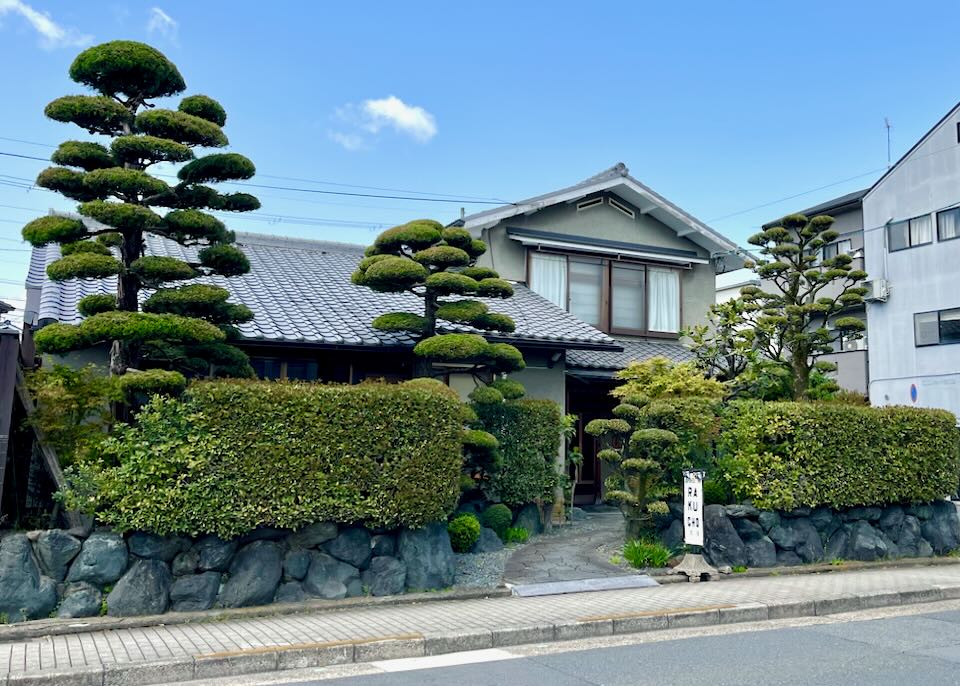
Rakucho Ryokan, a historic Japanese inn.
- The Best Hotel in Sakyo-ku:
Okura Kyoto Okazaki Bettei • Hotel phone: +81 75 771 5777- Best Ryokans:
Rakucho • Hotel phone: +81 75 721 2174
Sawaya Honten • Hotel phone: +81 75 761 4141
Iru • Hotel phone: +81 75 771 5003- Best Cheap/Mid-Range Hotels:
Kobako • Hotel phone: +81 80 3829 9343
Aoi Nakamoto • Hotel phone: +81 90 6326 9602
Sanjo Ohashi • Hotel phone: +81 50 5358 4776
YaDo! Kyoto Okazaki- Best Hostel:
Niniroom • Hotel phone: +81 75 761 25565. Kita-Ku (North Kyoto)
Kinkaku-ji (officially Rokuon-ji Temple), aka the Golden Pavilion.
The northern part of the city has some of Kyoto’s most famous temples. You’ll need to take taxis or buses to see them because they are spread out. The highlight is Kinkaku-ji (officially Rokuon-ji Temple), aka the Golden Pavilion, one of Kyoto’s top attractions. Try to get there when they open to beat the long lines, usually at 9 a.m. Once you’ve paid entry, there’s a relatively short one-way trail around the pavilion and its pond, offering several beautiful viewpoints (and photo ops). It was built in the 1390s as shogun Ashikaga Yoshimitsu’s retirement villa before becoming a Zen Buddhist temple after his death. The three-story pavilion is covered in gold leaf and sits beside an islet-studded pond, making for a brilliant contrast against a deep blue sky. It gained infamy in 1950 when a novice monk burned it to the ground. Yukio Mishima’s novel, The Temple of the Golden Pavilion, is based on the story. It was rebuilt soon after.
The Zen Buddhist “dry” gardens at Ryōan-ji Temple.
The Ryōan-ji and Ninna-ji temples are west in the next ward but are good to see in combination with the Golden Pavilion. It’s about a mile or 20-minute walk to Ryōan-ji, where you’ll pass The whimsical Insho-Domoto Museum of Fine Arts. Ryōan-ji is a Zen Buddhist temple with Japan’s most famous “dry” rock garden. Laid out in the Muromachi Period (1336–1573), it comprises 15 rocks set upon raked white gravel and enclosed by a beautiful earthen wall on three sides and a verandah on the fourth. Inviting contemplation, come at 8 a.m. when it’s relatively quiet. The temple’s vegetarian restaurant, Saigen-in, specializes in tofu.
Nearby, Ninna-ji is best known for its picturesque five-story pagoda.Other highlights include Daitoku-ji, a vast Rinzai Zen temple complex known for its dry gardens. The beautiful Kitano Tenmangu Shinto shrine is popular with students during exam time (and during the plum blossom and fall foliage seasons) and hosts the monthly Tenjin-san flea market.
Shimogamo Shrine.
The bright vermilion Shimogamo Shrine has buildings set along the narrow Mitarai stream. Here, worshippers float paper fortune slips on the water, and it’s the setting for the annual Aoi Matsuri festival, along with the sister Kamigamo Shrine. You can take a temple break at the Kyoto Botanical Gardens, which harbors more than 12,000 native and foreign plants and a huge Conservatory (greenhouse). In springtime, it’s worth shlepping up to Haradani-en Garden to admire Kyoto’s most spectacular cherry blossom.
North Kyoto is also the best place to experience a traditional Japanese tea ceremony: try Tea Ceremony Camellia Garden, near Ryōan-ji (book ahead), or Tea Ceremony Koto near the Golden Pavilion.
There are a handful of more secluded hotels up here, convenient for the temples (and blissfully quiet for getting over jet lag), but it’s a bit far from the rest of the city.
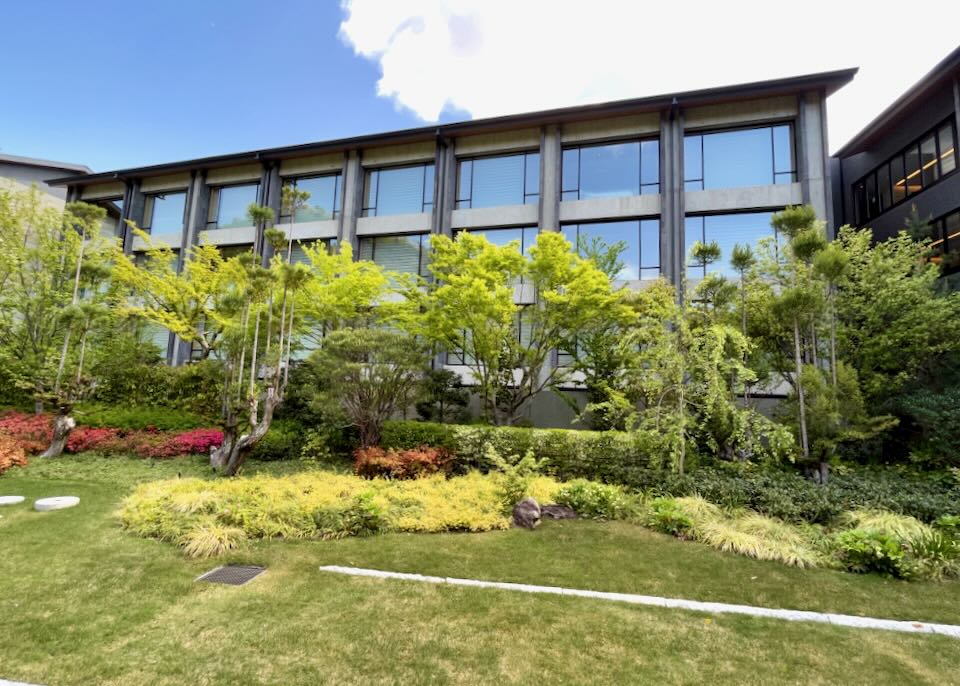
The gardens of Roku
- The Best Hotels in Kita-Ku (North Kyoto):
Roku • Hotel phone: +81 75 320 0111
Aman • Hotel phone: +81 75 496 1333
Tokyu Harvest Club • Hotel phone: +81 75 491 0109- Best Ryokan:
Satsukian • Hotel phone: +81 774 41 1555- Best Cheap/Mid-Range Hotels:
Sakura Komachi • Hotel phone: +81 80 4029 6055
Bon • Hotel phone: +81 80 6868 23376. Arashiyama & Ukyō-ku (“Ward on the Emperor’s Right”):Northwestern Kyoto
A walking path through the Arashiyama Bamboo Grove in Adashino Nenbutsu-ji Temple.
Primarily residential, Ukyō Ward in Northwestern Kyoto contains the pretty district of Arashiyama. It is an ancient tourist town beloved for its spring cherry blossoms, fall maple leaves, photogenic Bamboo Grove, and many temples. It makes for a fascinating day trip from central Kyoto. A stay here gives a taste of small-town Japanese life. However, the central part of Arashiyama along the river can become unbearably crowded at weekends.
Rickshaw drivers in Arashiyama.
Shops and restaurants line the main street from Arashiyama Station to the Katsura River. The wooden Togetsukyō Bridge is one of the town’s most famous sights. Once across, the Iwatayama Monkey Park on the slopes of Arashiyama mountain is the main attraction on the southern side. You can usually feed the wild Japanese macaque monkeys at the end of a steep path to the observation deck.
Most of Arashiyama’s attractions lie north of the river, beginning with the Arashiyama Bamboo Grove; a short path cuts through this dense bamboo forest, offering mesmerizing views of the giant stalks. You can also access the Bamboo Grove from the back of Tenryu-ji, Arashiyama’s primary Buddhist temple, with pretty gardens and an excellent vegetarian restaurant, Shigetsu.
On the other side of the Bamboo Grove, it’s worth strolling around the far less busy Ōkōchi Sansō Garden on the hillside. It contains the Japanese-style home and beautifully landscaped gardens of 1920s film idol Denjirō Ōkōchi (a cup of matcha tea and sweet biscuit at the teahouse is included). The path takes you up to a ridge with fabulous views of Kyoto, the Hozu River gorge on the other side, and a small museum dedicated to Ōkōchi himself.
10,000 Buddhist statues were carved in memory of those who died without family at Adashino Nenbutsu-ji Temple.
The quiet residential district north of here is known for its atmospheric temples and historical monuments. The rustic Thatched Rakushisha hut is said to have been the home of Mukai Kyorai (1651–1704), one of the disciples of haiku master Bashō. The similarly rustic thatched Buddhist shrine, Giō-ji Temple, is lush with moss-covered gardens. Traditional wooden homes line Saga Toriimoto Preserved Street. Adashino Nenbutsu-ji Temple is home to around 10,000 Buddhist statues carved for those who died without family.
Nearby are Seiryō-ji, with its justly famous 10th-century Buddha statue (carved in China), and Daikaku-ji Temple, with a lovely pond (boat rides on the weekends), a teahouse, and a small pagoda.
Other attractions in Ukyō beyond Arashiyama include the Toei Kyoto Studio Park, a working film studio and theme park, where you might see a samurai flick or period turn-of-the-century movie being made in its recreated village.
Further south along the Katsura River lies the Katsura Imperial Villa, the finest example of traditional architecture and gardening in Japan. Built in the 1620s as a private villa for the imperial family and surrounded by a perfectly manicured walking garden. It’s only open for one-hour guided tours in Japanese (free audio guides in English are available). Make reservations online in advance.
- The “Sagano Romantic Train” is a 25-minute train ride from Arashiyama to Kameoka along the Hozu River Gorge; “Hozugawa River Boat Ride” is a two-hour trip through the gorge.
- Ukyō is spread out, generally quieter, with cheaper hotels away from the action. Arashiyama is the main tourist section of the district, with some hotels good for exploring the area before the day trippers arrive, but not convenient for seeing the rest of Kyoto.
- Northwestern Kyoto is also home to the celebrated moss gardens of Saihō-ji, a 14th-century Zen Buddhist temple. The wet, emerald-green gardens are a magical sight, but you can only visit by applying for a tour 1 to 2 months in advance by mailing your name, address, age (12 years and over only), number of people in your group, and several dates you’d be able to visit. For the return of a postcard confirming your visit, you also need to include a self-addressed envelope either to your hotel in Japan or, along with International Reply Coupons, to your home address. Alternatively, a Japanese web service will do the work for you for an extra fee. All visitors must attend a short Zen ceremony before entering.
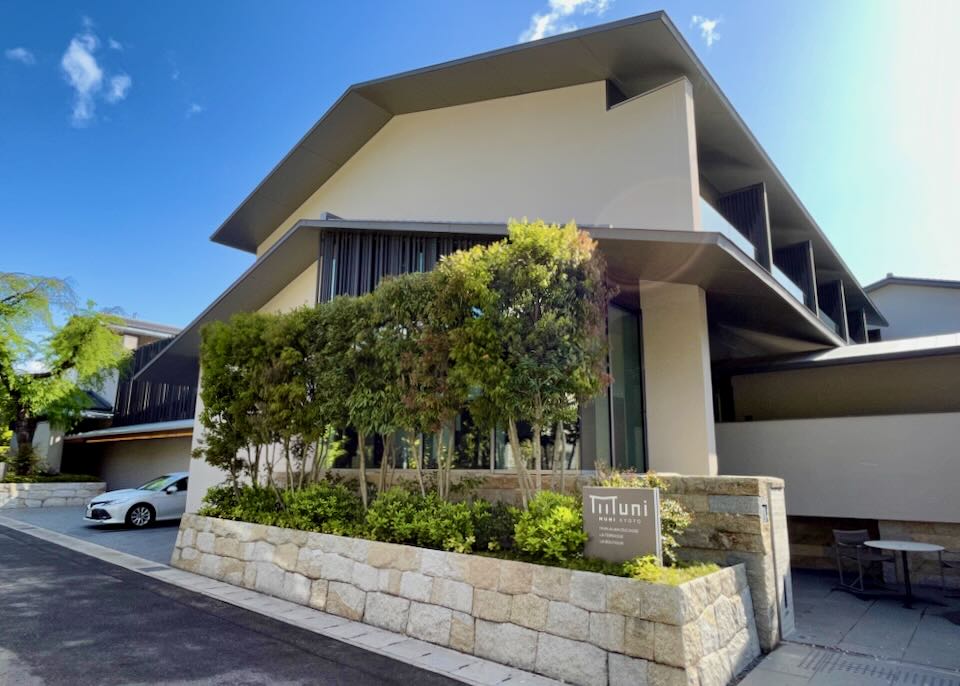
One of our favorite hotels in Ukyō-ku is MUNI.
- The Best Hotels in Arashiyama & Ukyō-ku (Northwestern Kyoto):
Nagi • Hotel phone: +81 75 863 1515
MUNI • Hotel phone: +81 75 863 1110
Grand West • Hotel phone: +81 75 863 1010
Estate Tokyu Nishikyogoku • Hotel phone: +81 75 323 2111
Riverside • Hotel phone: +81 75 205 5323- Best Cheap/Mid-Range Hotels:
Yado • Hotel phone: +81 75 873 2201
Guesthouse Kyoto Arashiyama • Hotel phone: +81 75 873 2201
Atagoya • Hotel phone: +81 75 881 7123- Best Hostels:
Mulan • Hotel phone: +81 75 406 5961
Utano • Hotel phone: +81 75 462 2288Kyoto With More Time
We’ve covered our favorite neighborhoods to visit and stay in more detail above, but with more time, these areas are also worth checking out.
Southeast Kyoto: Some of Kyoto’s most famous temples lie southeast of Kyoto Station and the city center, at the southern end of the Higashiyama Mountains. All of them can be reached relatively easily (and quickly) via frequent JR trains. The closest is the 13th-century Tōfuku-ji Temple, a Zen Buddhist shrine known for its rock gardens and spectacular fall foliage. Further up the slopes lies Sennyū-ji Temple, a far less visited spot that includes the Mausoleum of Emperor Kōmei. A mile or so further south is the spectacularly photogenic Fushimi-Inari Taisha, an 8th-century Shinto shrine that’s become one of Kyoto’s top sights thanks to the thousands of bright vermilion torii (gates) lining the maze of paths up and down the mountain behind it. Get there early to snag the best pics.
Kyoto Travel Tips
- The best times to visit Kyoto are late March to mid-April cherry blossom season and the November fall foliage season. But these are also the busiest times. Book hotels months in advance and expect large crowds if you visit during these periods. Summer is usually hot and humid in Kyoto.
- Kyoto is probably Japan’s most English language-friendly city, with almost all staff at the Kyoto Station, major hotels, and attractions speaking at least basic English, and plenty of folks working in shops and restaurants around the city. That said, most of the population will struggle to understand English. Learn a few words in Japanese if you can. Signage in the station (and around the city) is translated into English.
- Kyoto’s nearest airports are not particularly convenient: Kansai International Airport (some 60 miles/96km southwest of Kyoto Station, out in Osaka Bay) and domestic Osaka International Airport or Itami (25 miles/40km southwest of Kyoto Station). From Kansai, there’s the “Limited Express Haruka” train service to Kyoto Station (around 1hr 20min). Taxis are expensive – at least ¥35,280 (US$250–260) to Kyoto Station depending on when you arrive (allow 2 hrs). The easiest way to get to Kyoto from Osaka Airport is to take a bus (allow 1hr). The bullet train (Shinkansen) from Tokyo is more convenient than flying – it takes just 2hr 10min.
- If you need to stay at Kansai for an early flight, the modern Hotel Nikko Kansai Airport is a convenient option. The First Cabin Kansai Airport capsule hotel next door is cheaper and adequate for one night, but only if you’re used to this sort of hotel.
- Free wi-fi is available at over 1,000 hotspots across the city thanks to “KYOTO Wi-Fi” and “Japan Free Wi-Fi KYOTO” (after you register your email or social media account).
- The city operates the helpful Kyoto Tourist Information Center at Kyoto Station (2nd floor, open daily 8.30am–7pm). The regional Kansai Tourist Information Center is on the 3rd floor of Kyoto Tower (daily 10am–5.30pm).
Read More
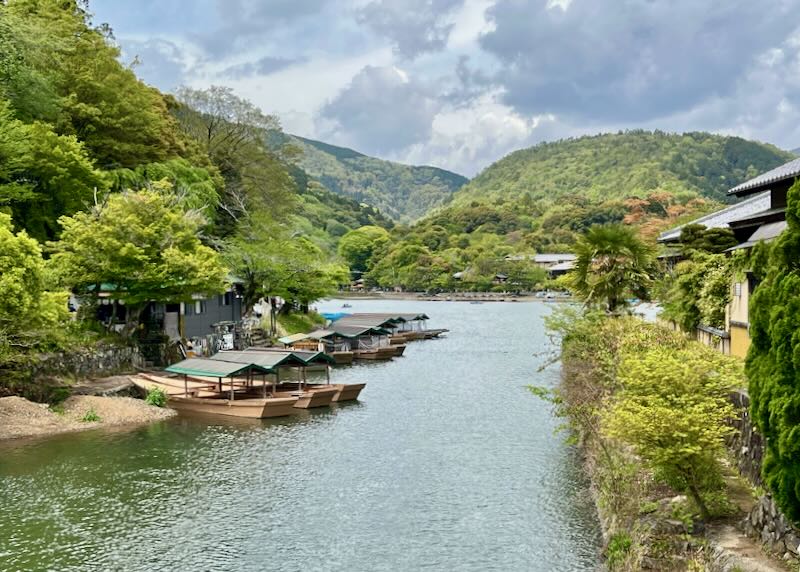
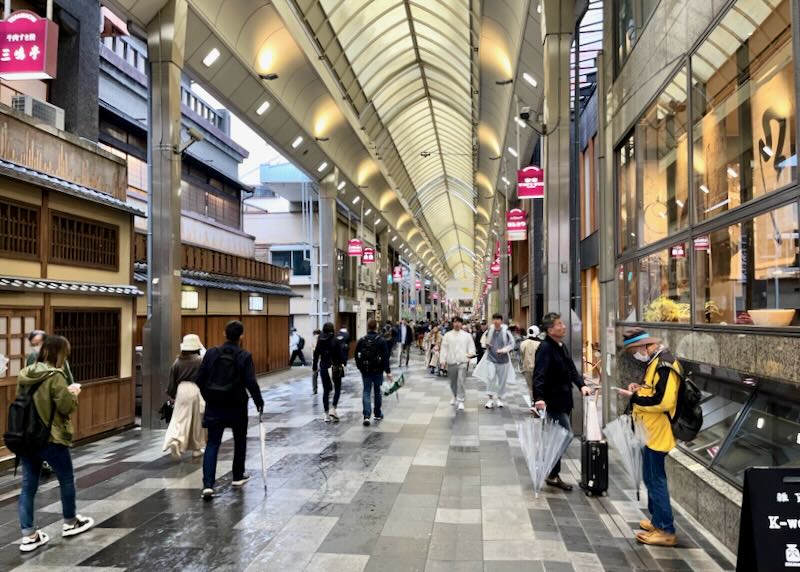
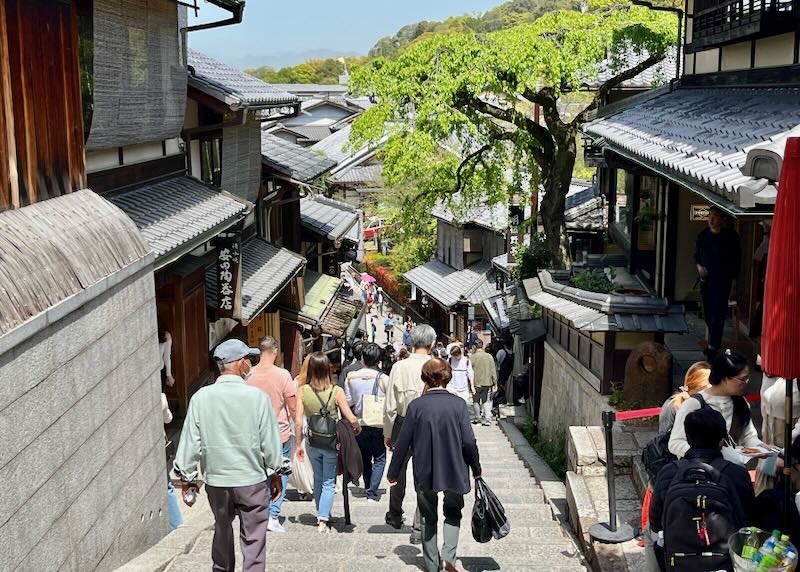
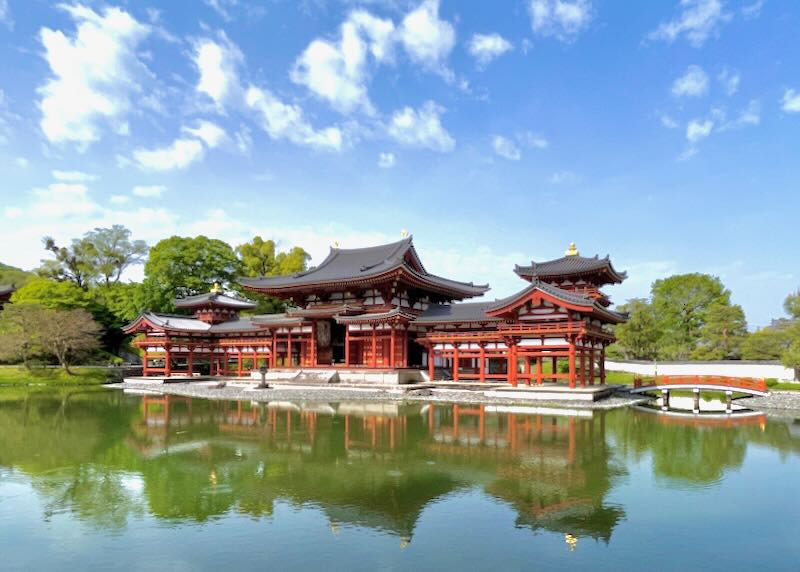
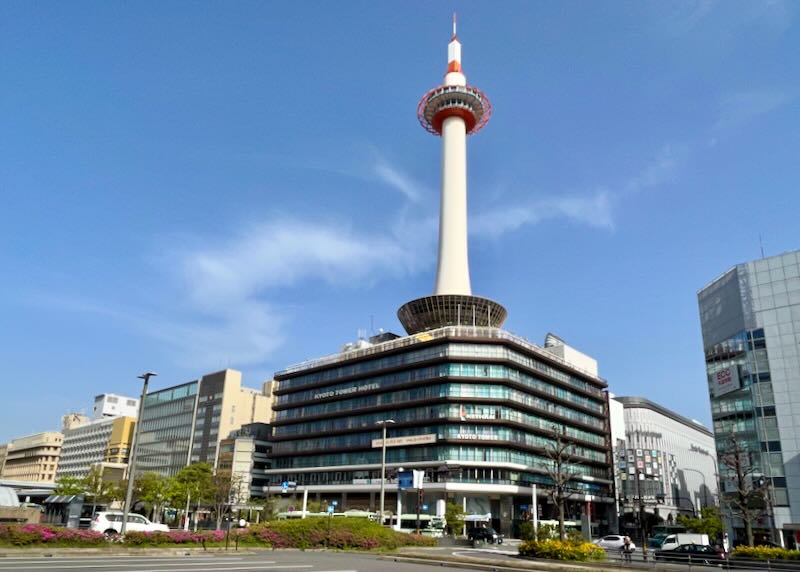
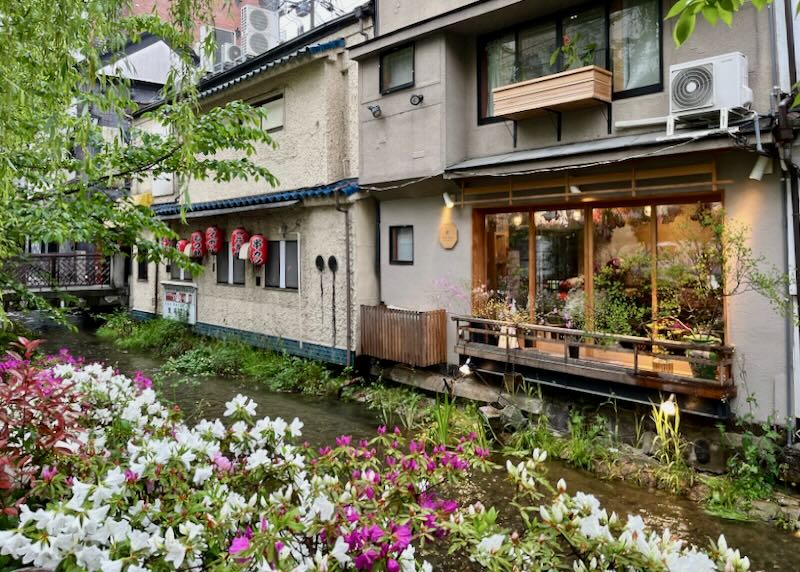
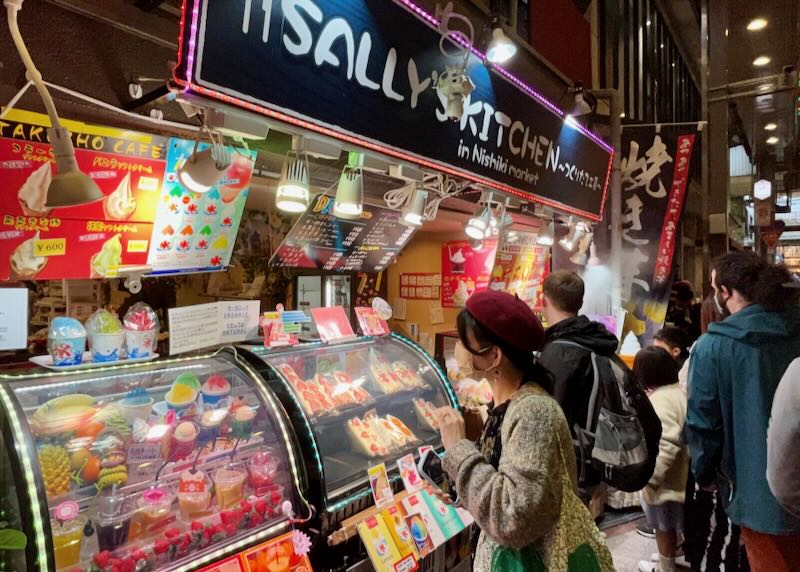
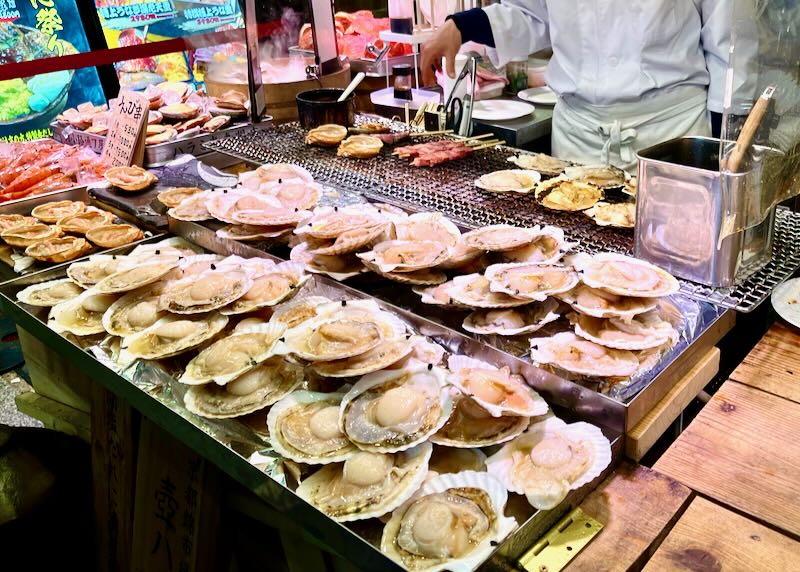
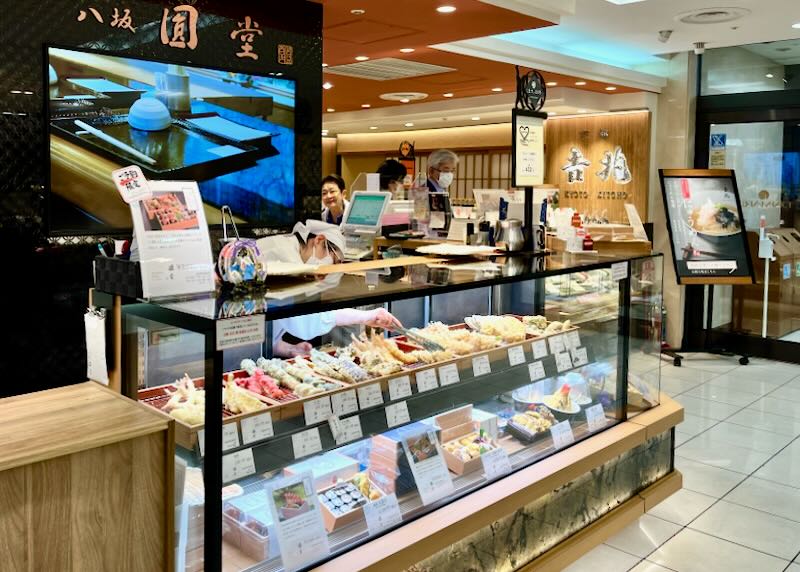
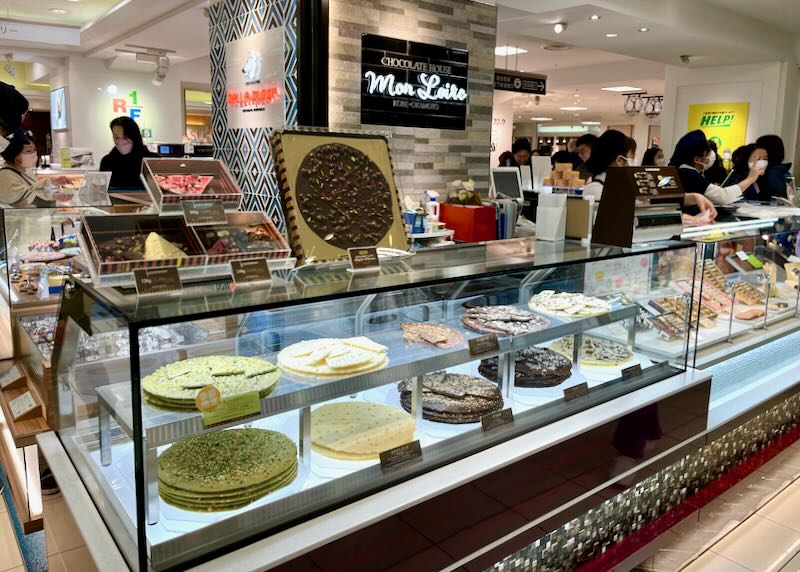
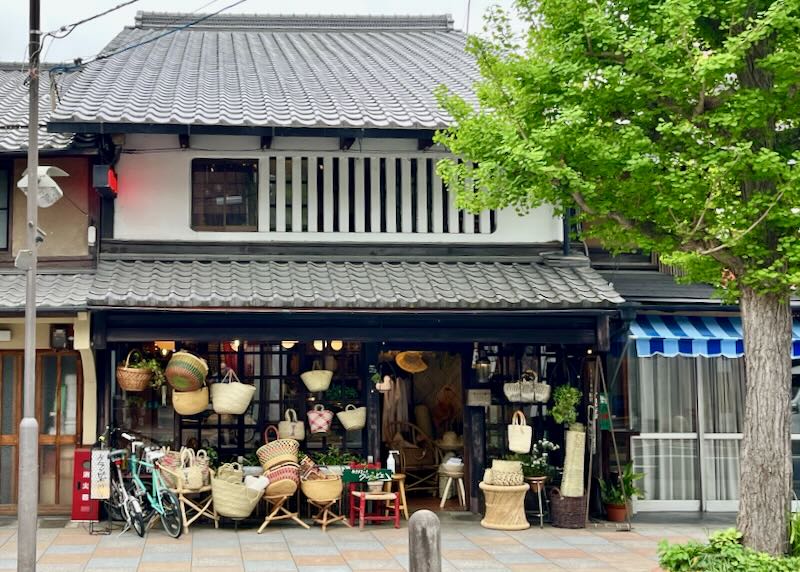
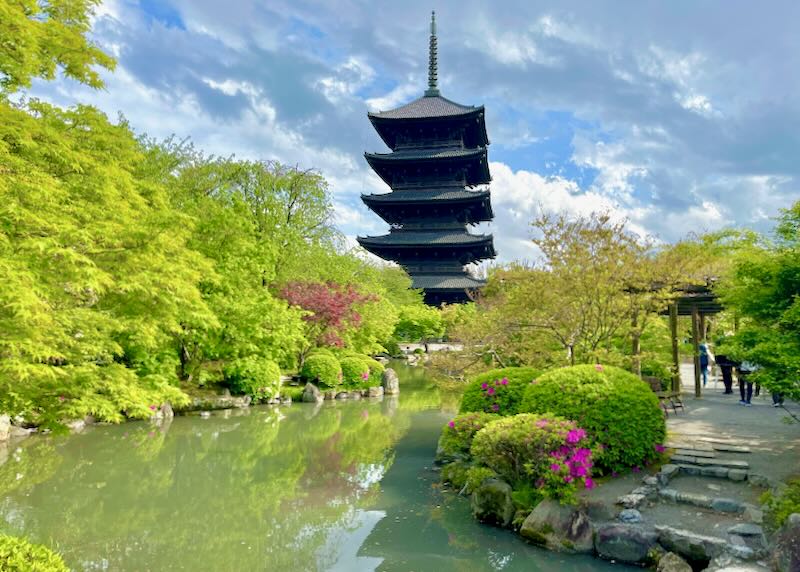
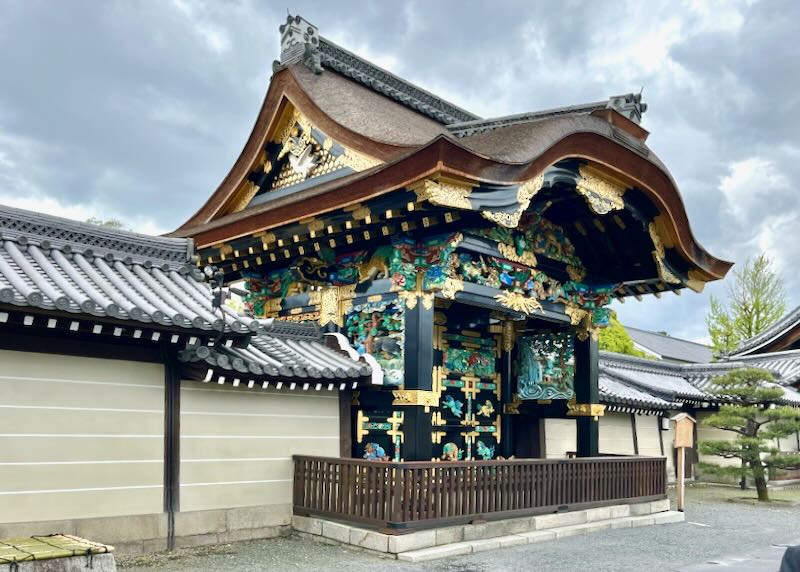


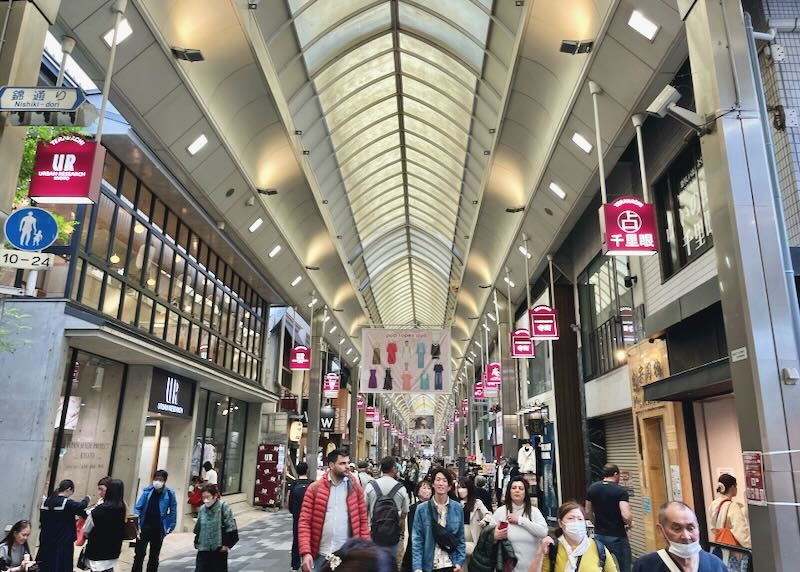
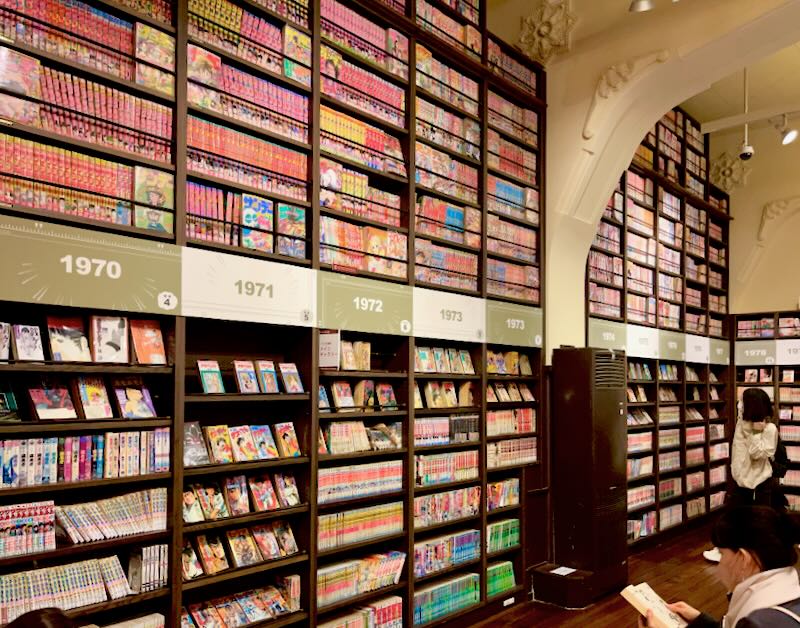
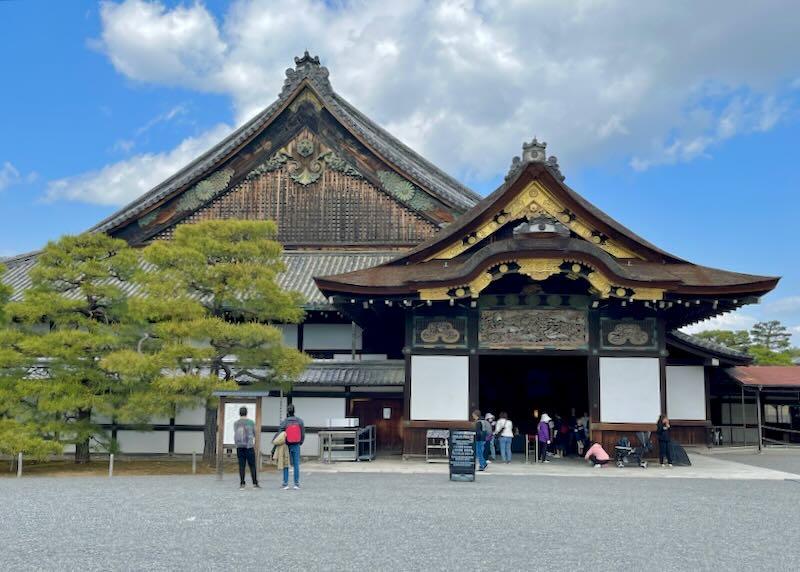
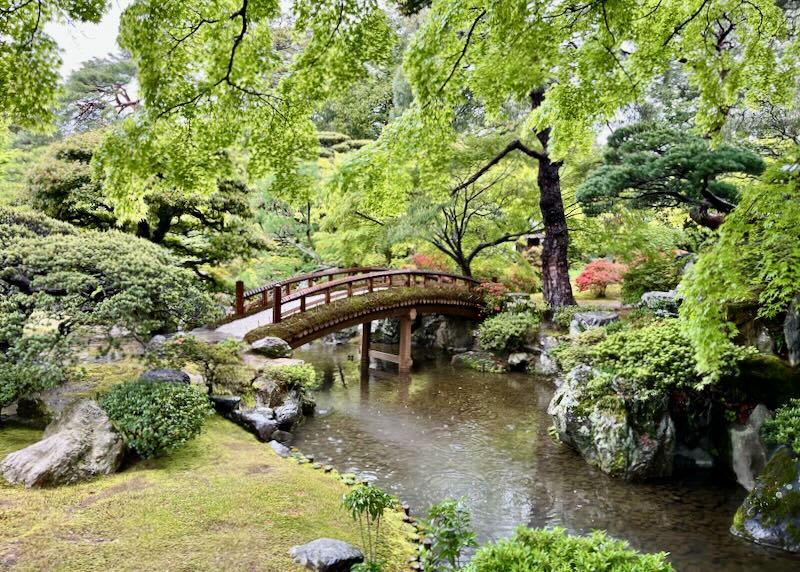
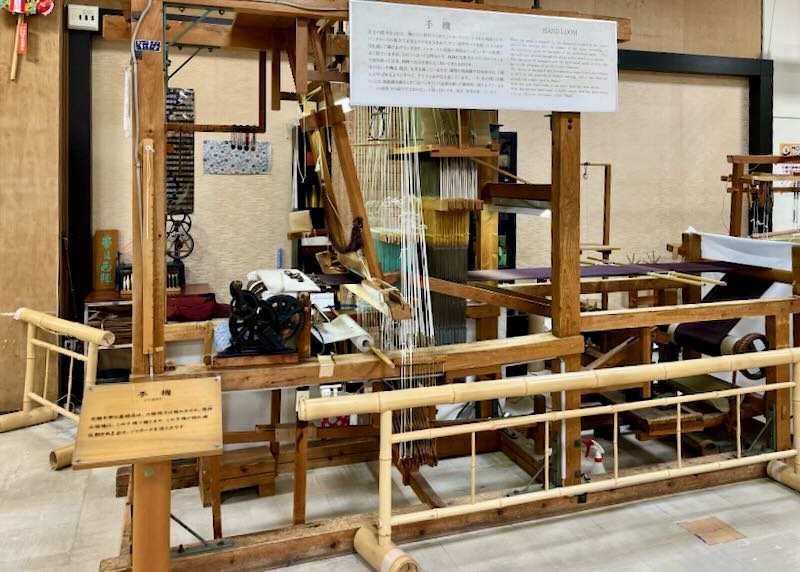
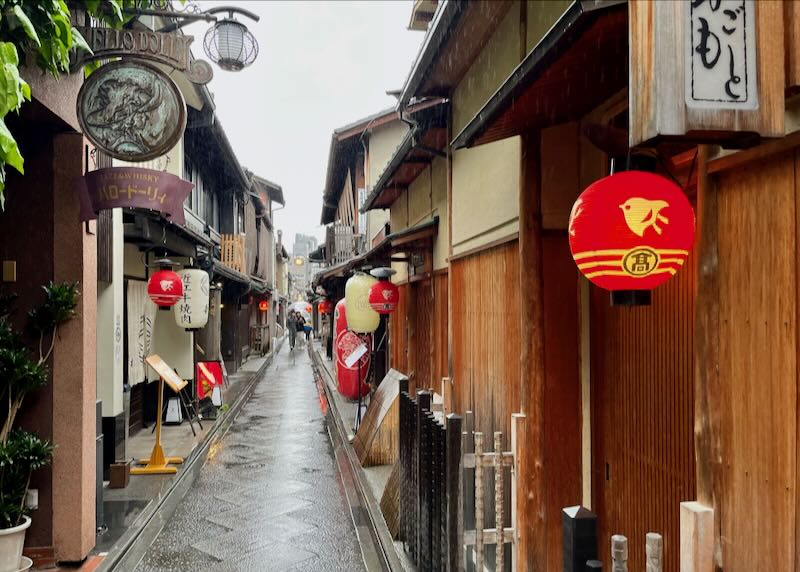
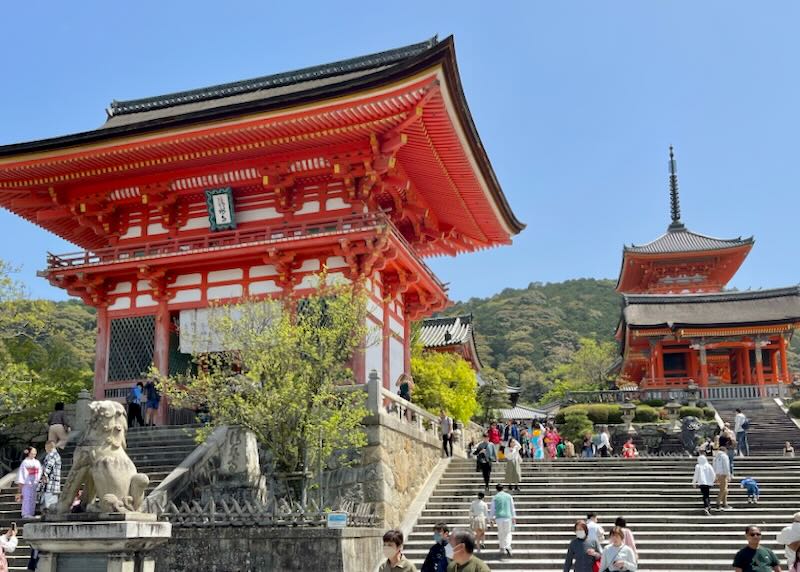
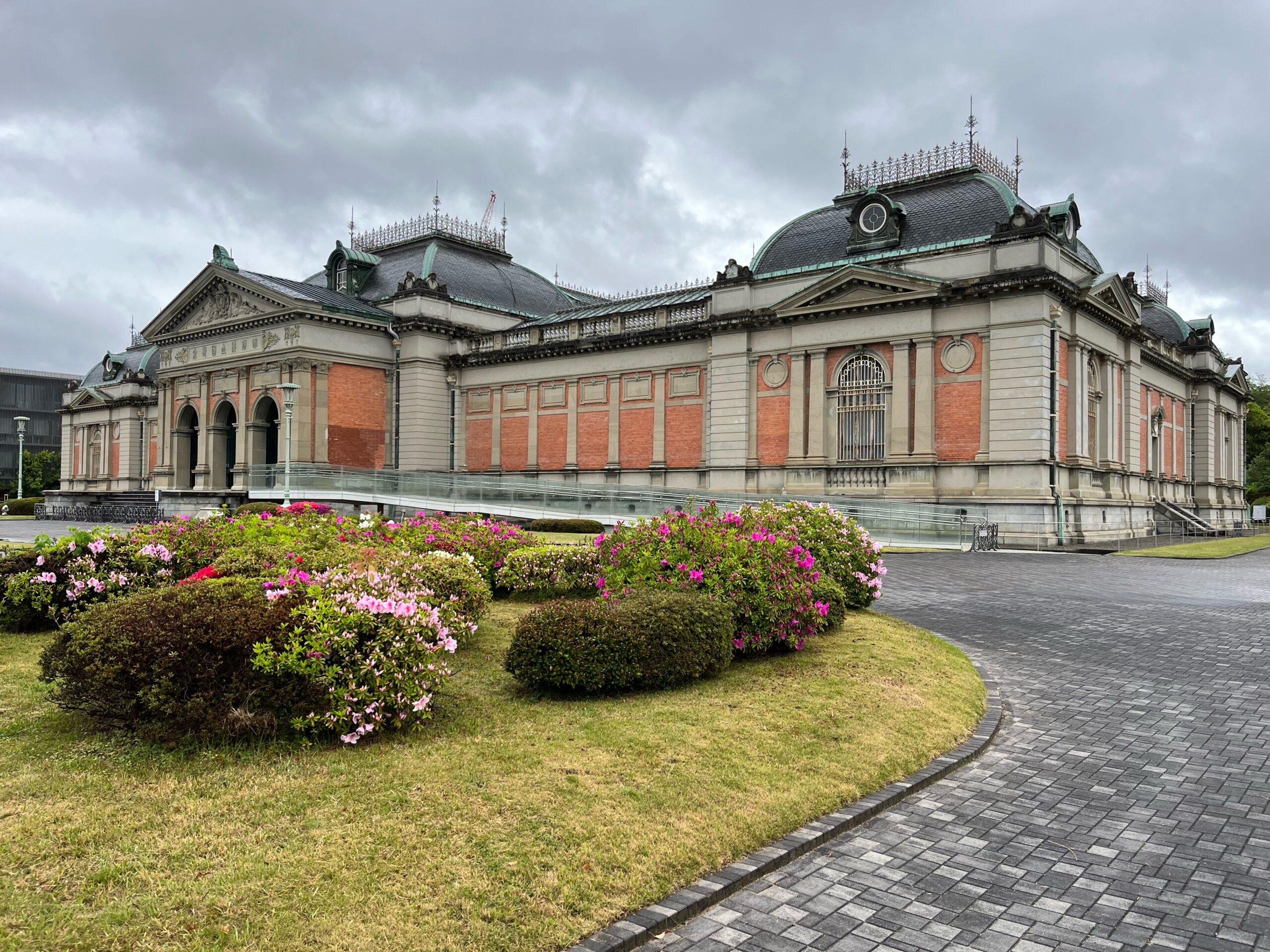
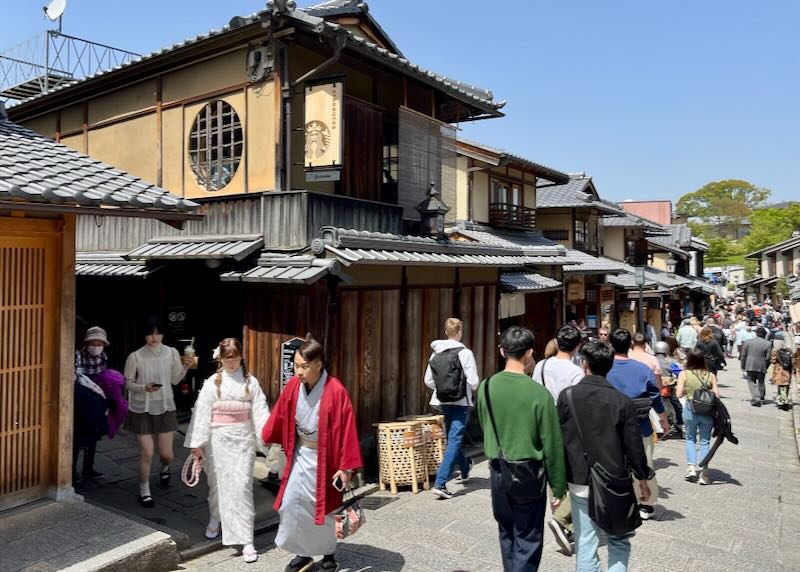
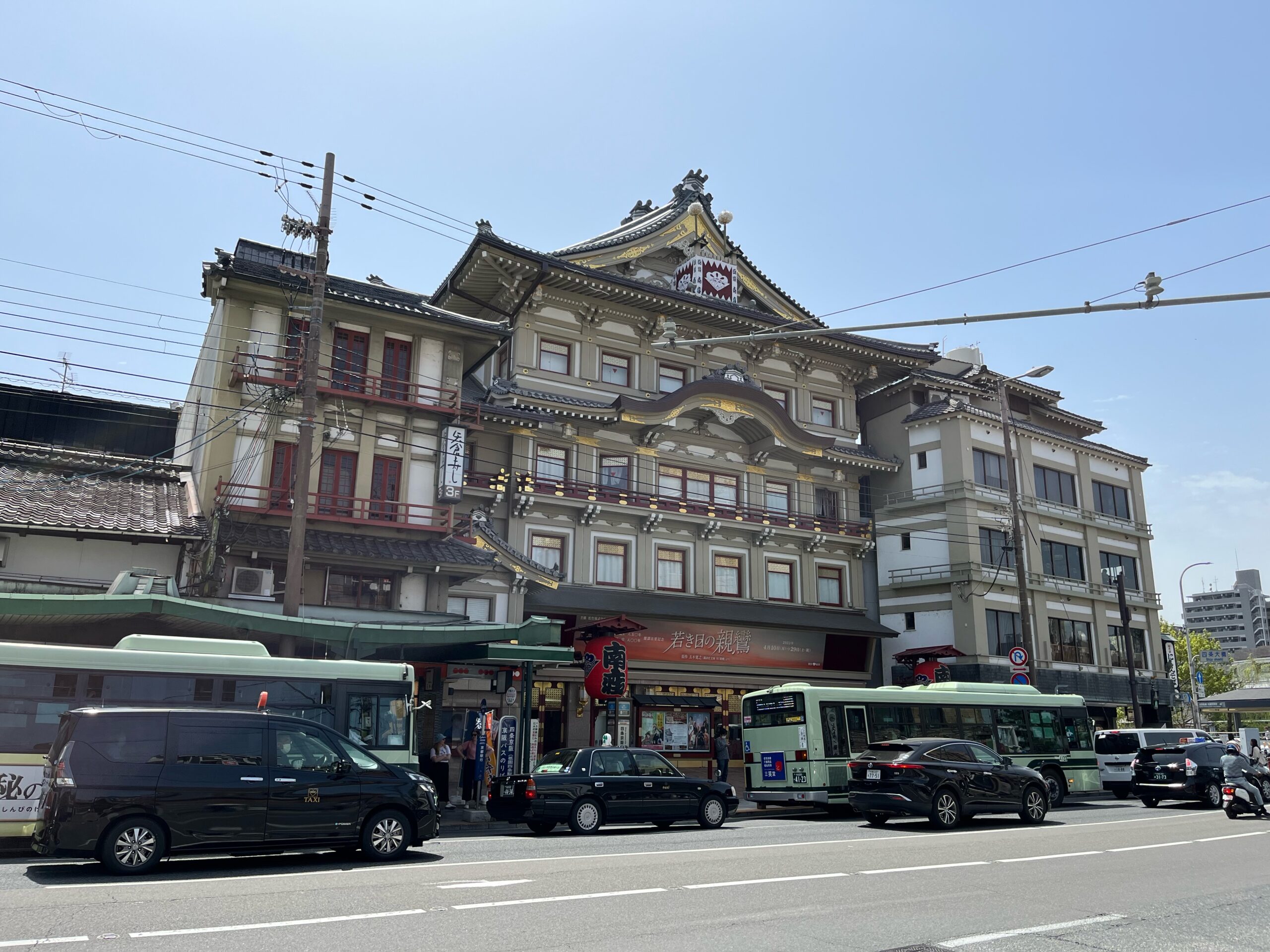
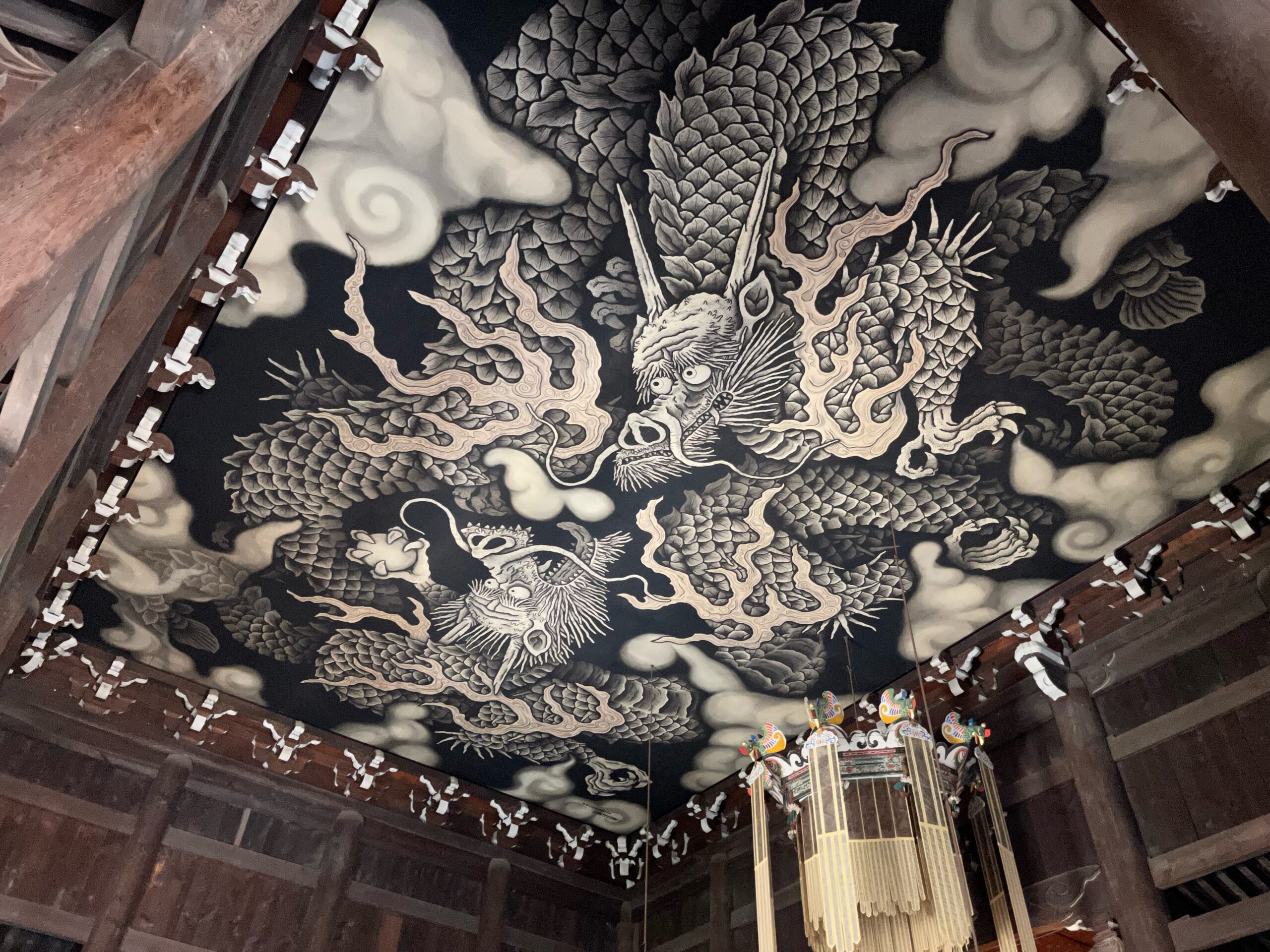

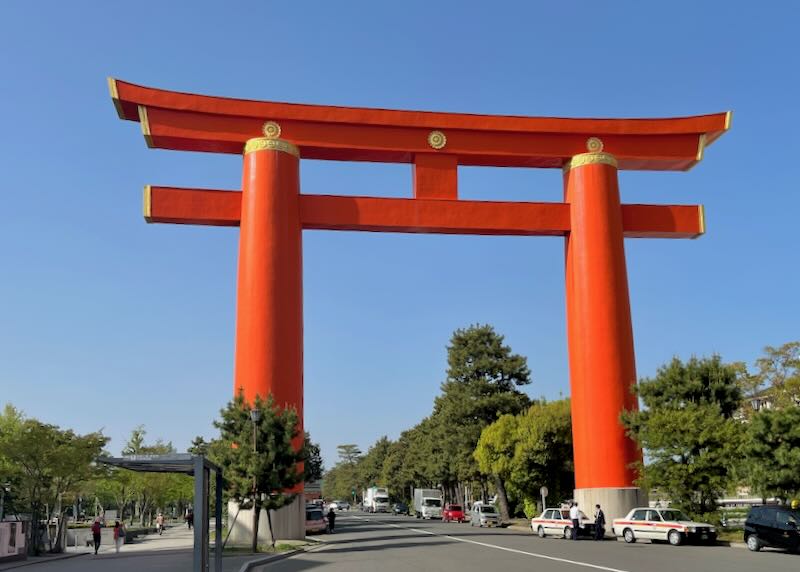
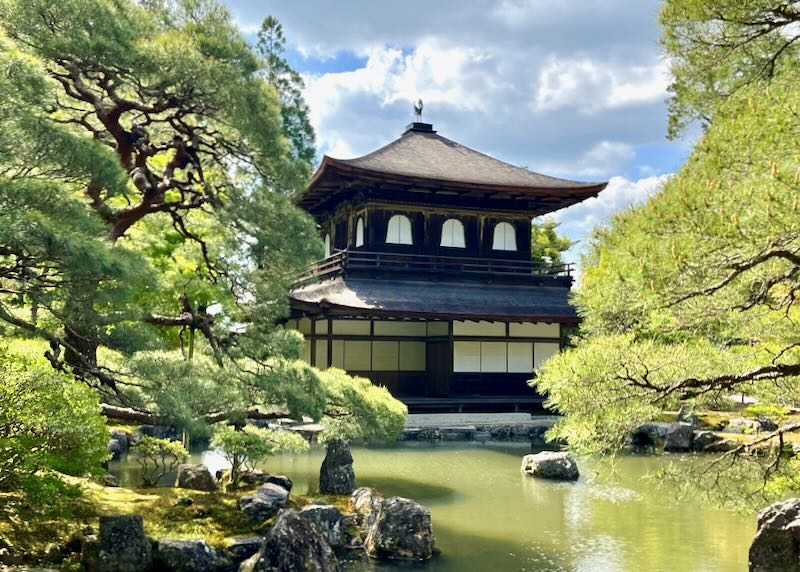
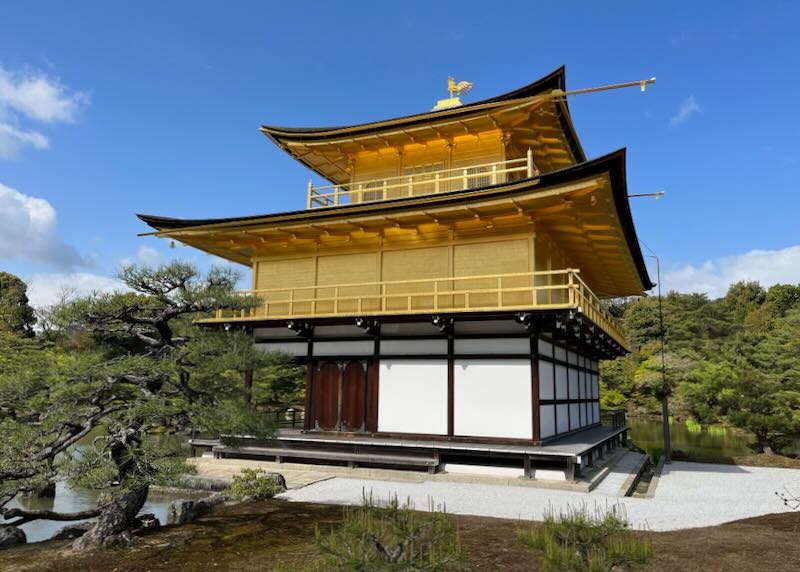
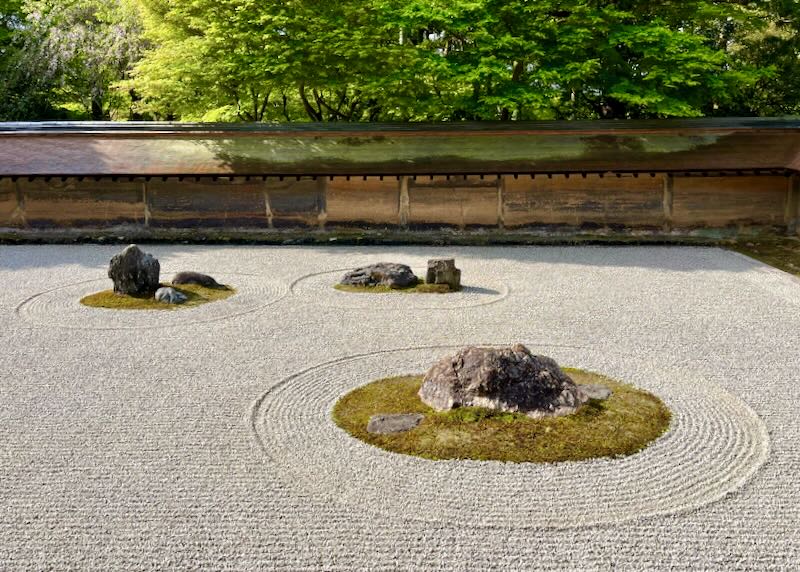
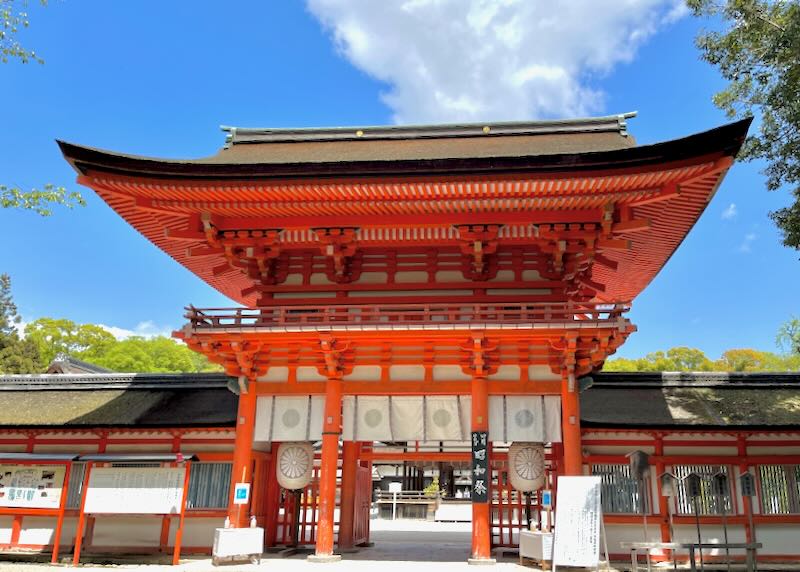
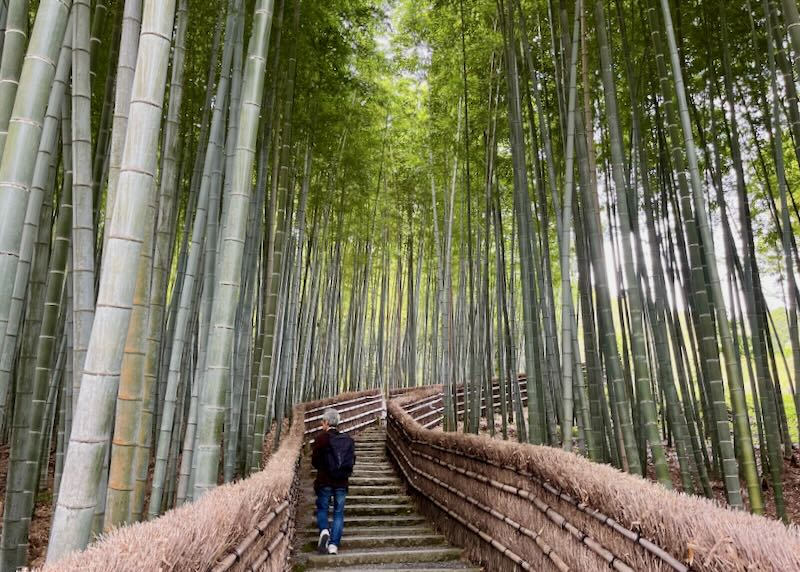
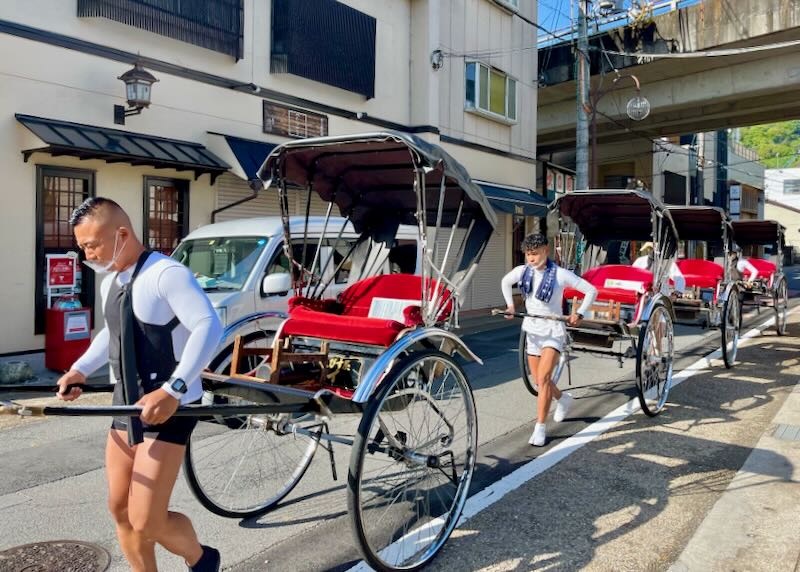
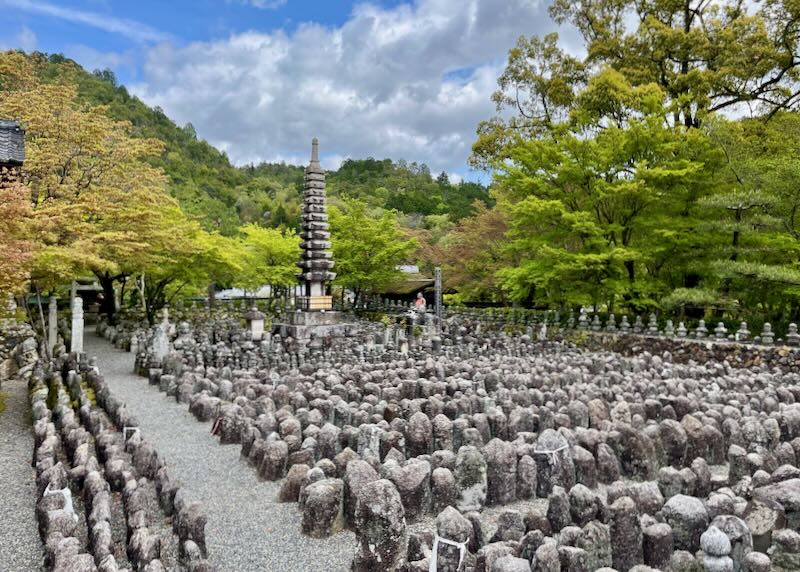
About Santorini Dave